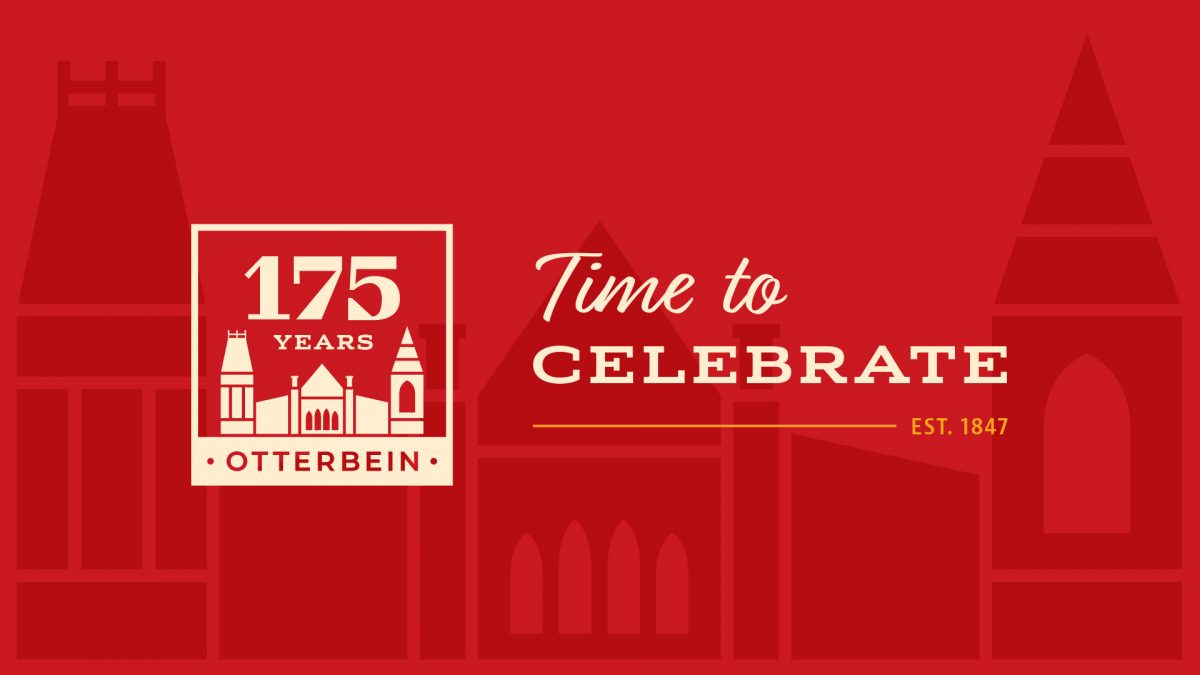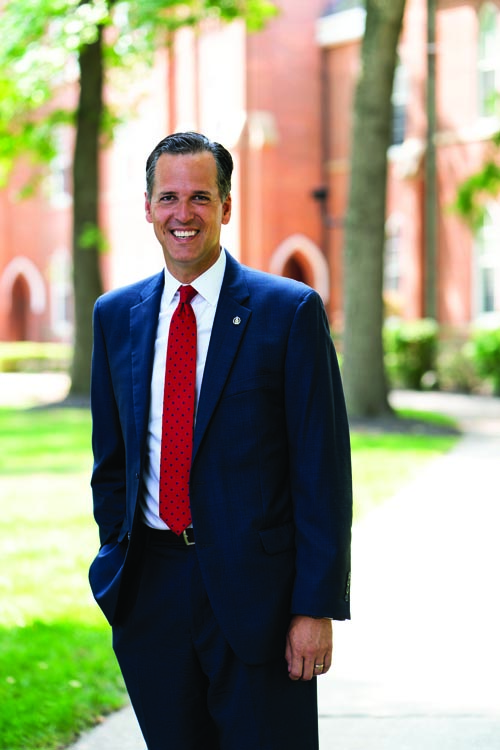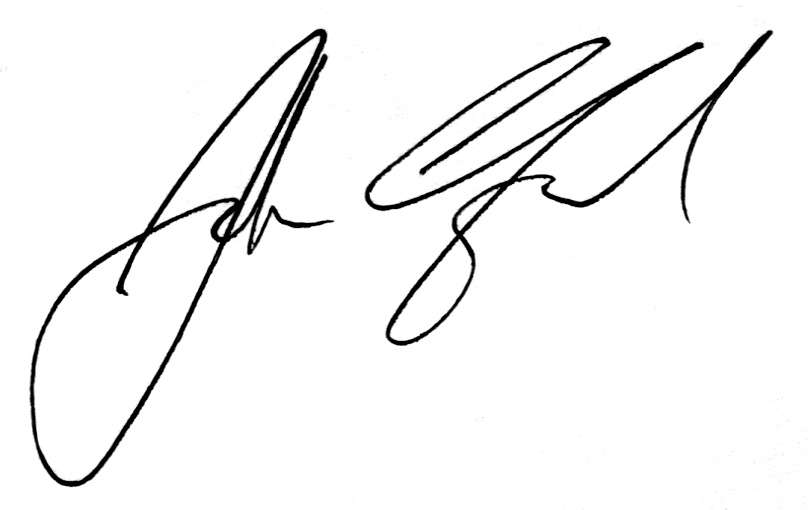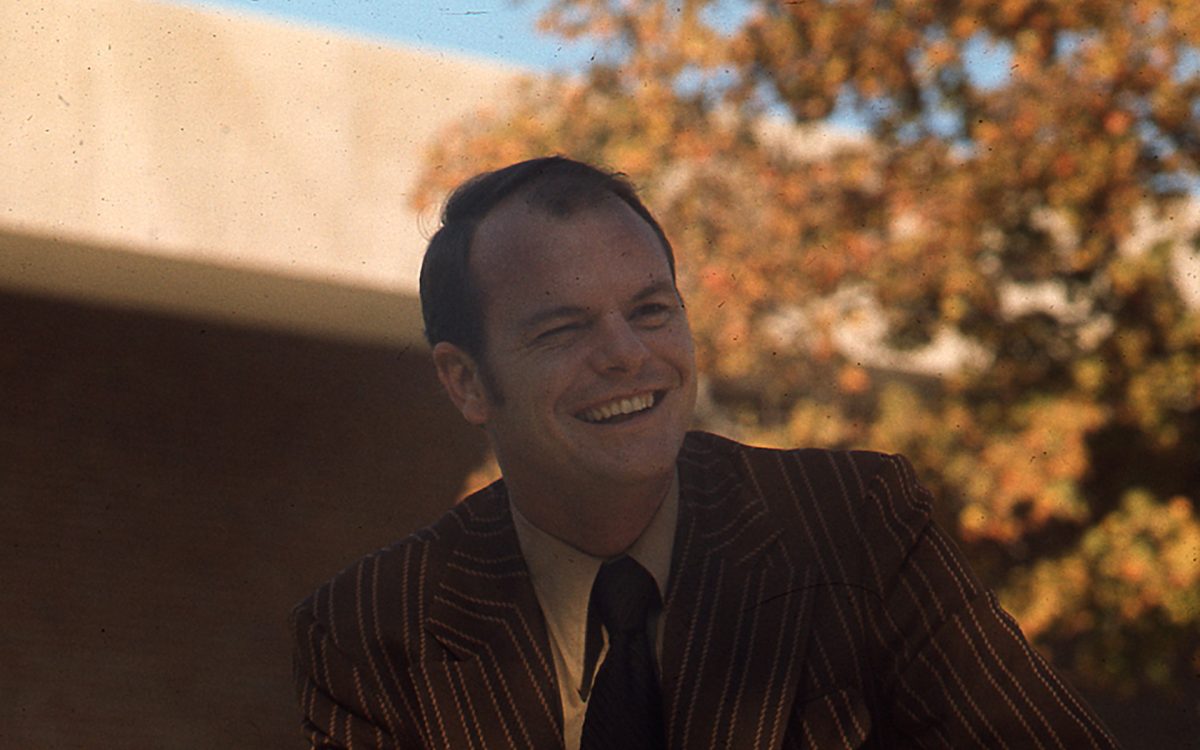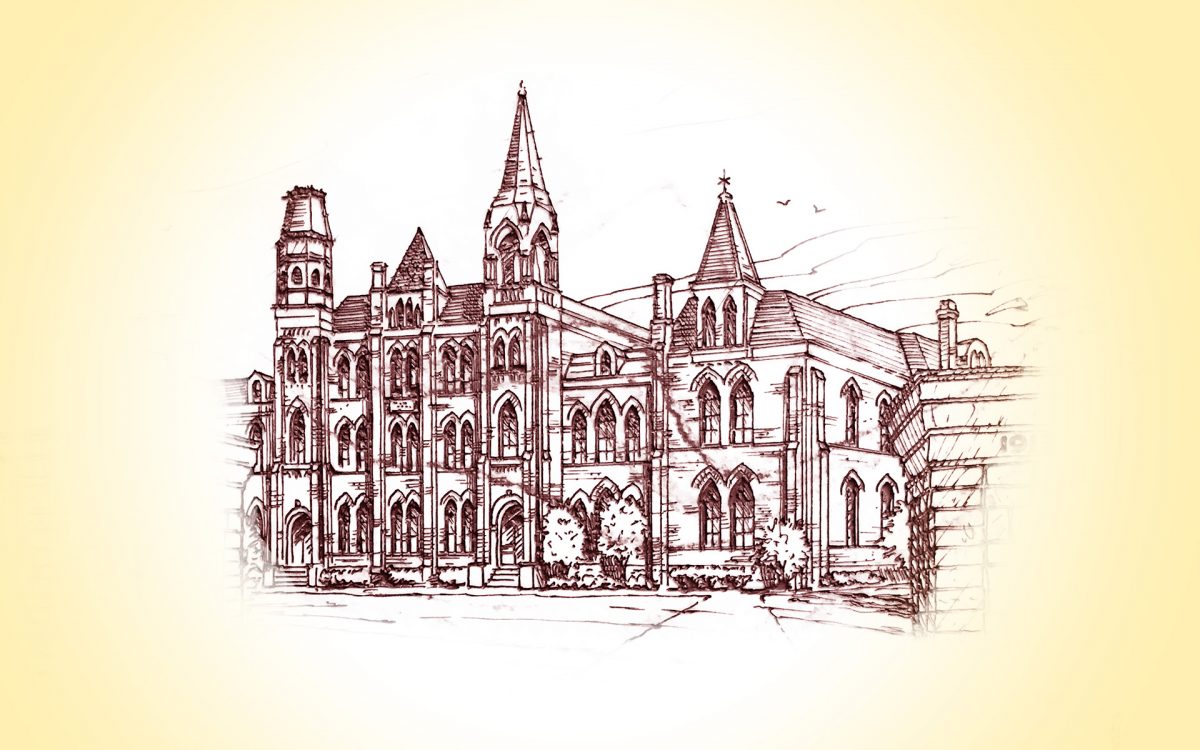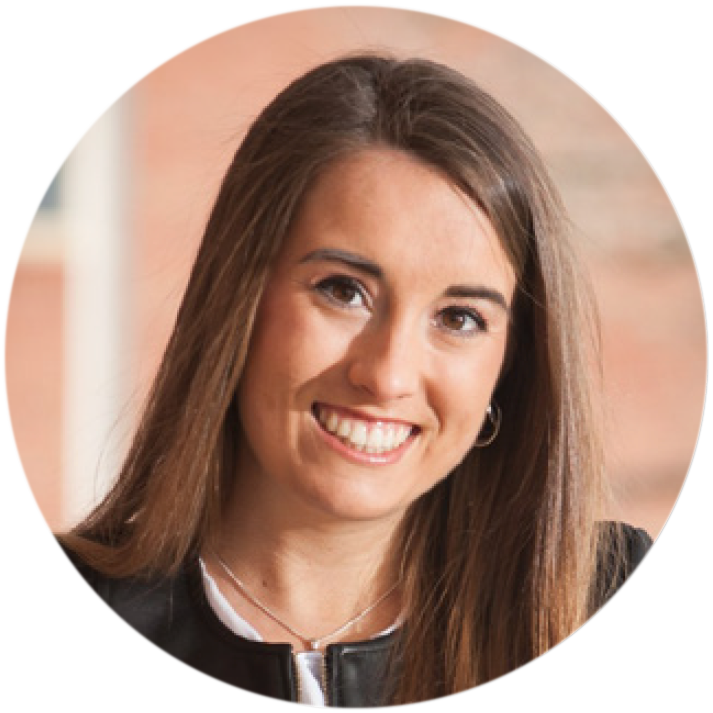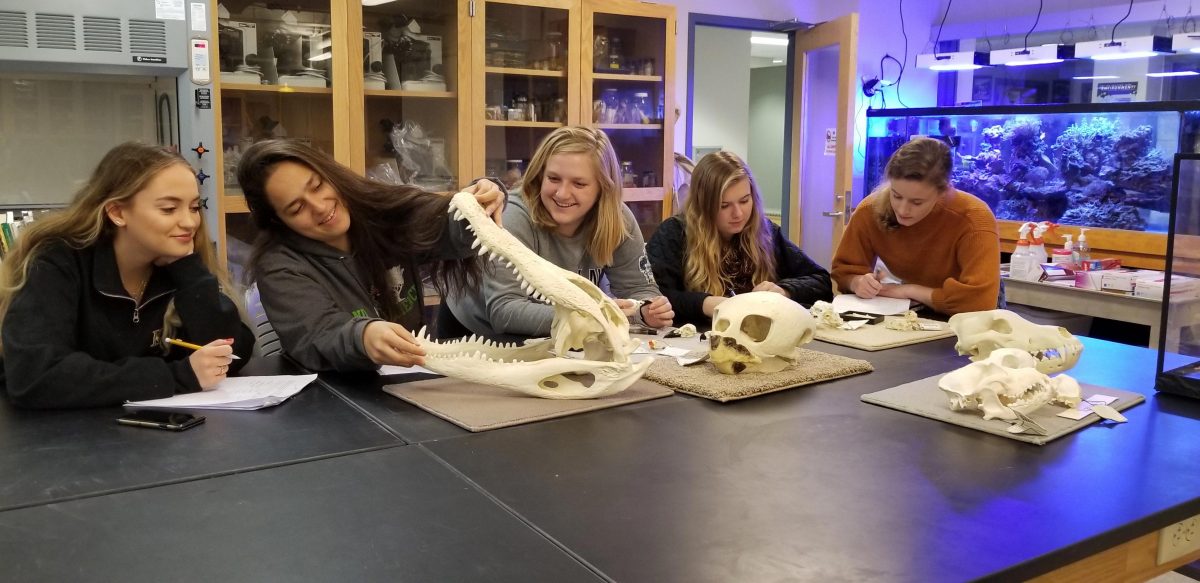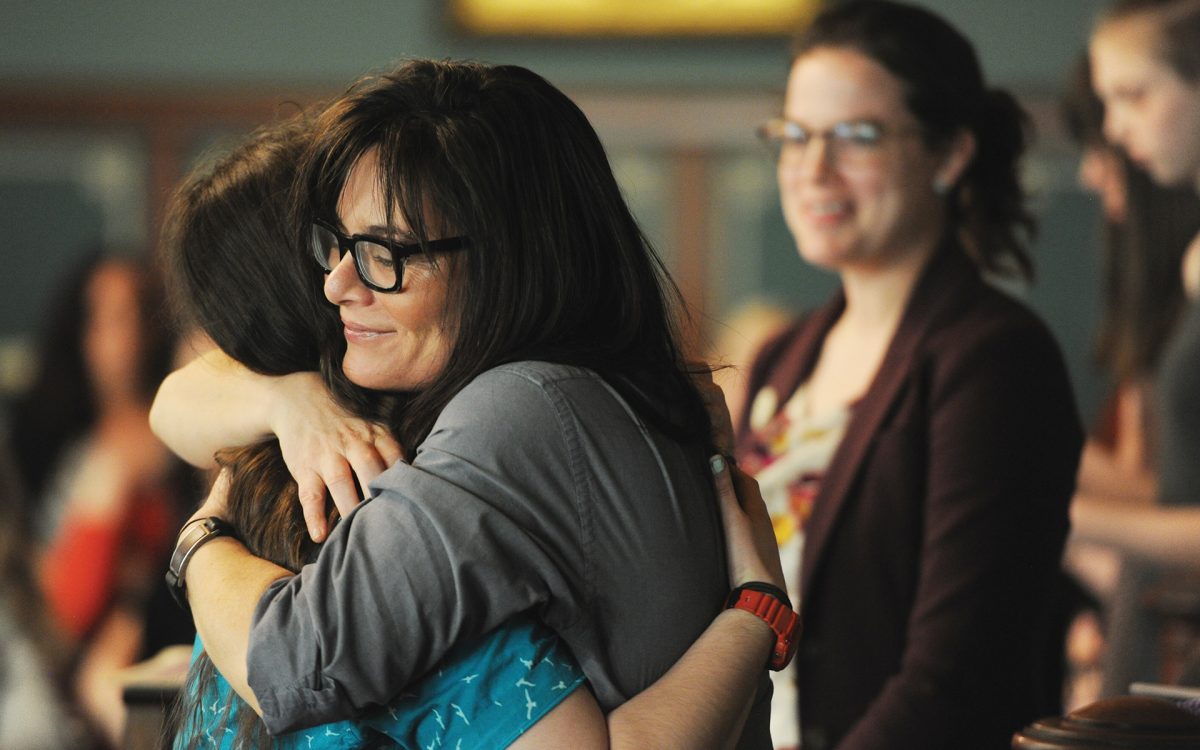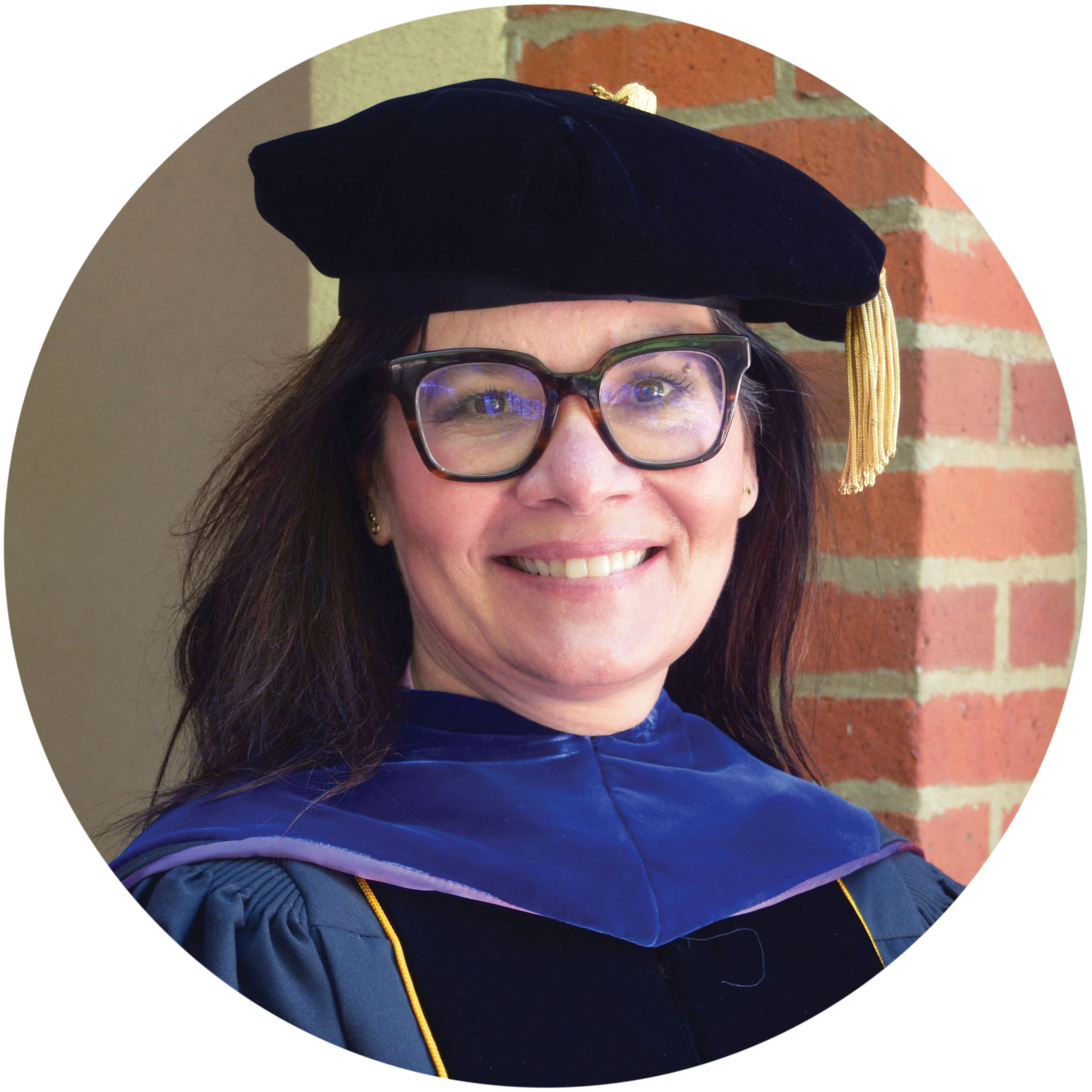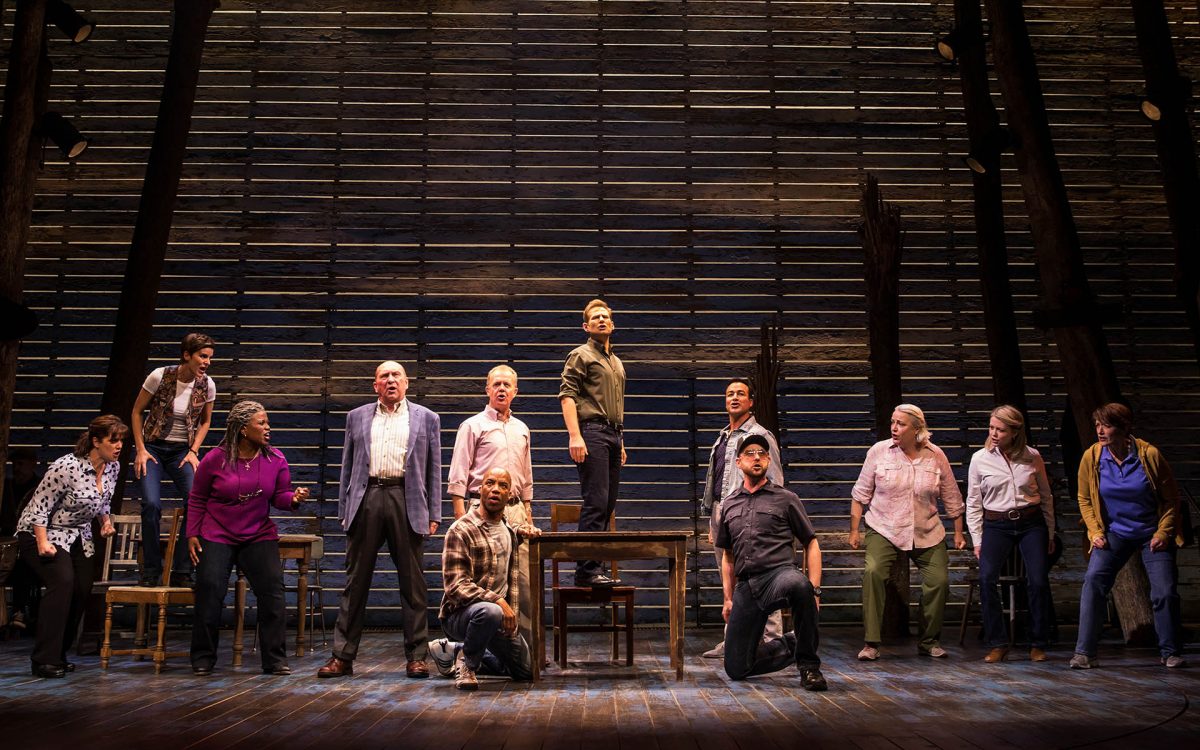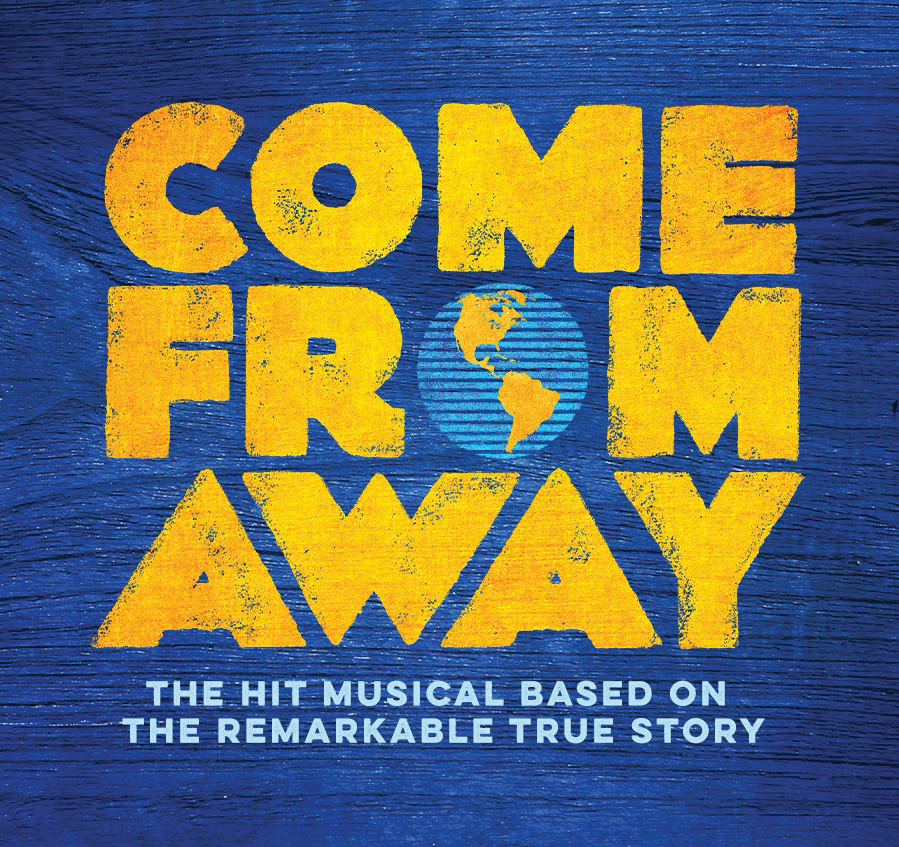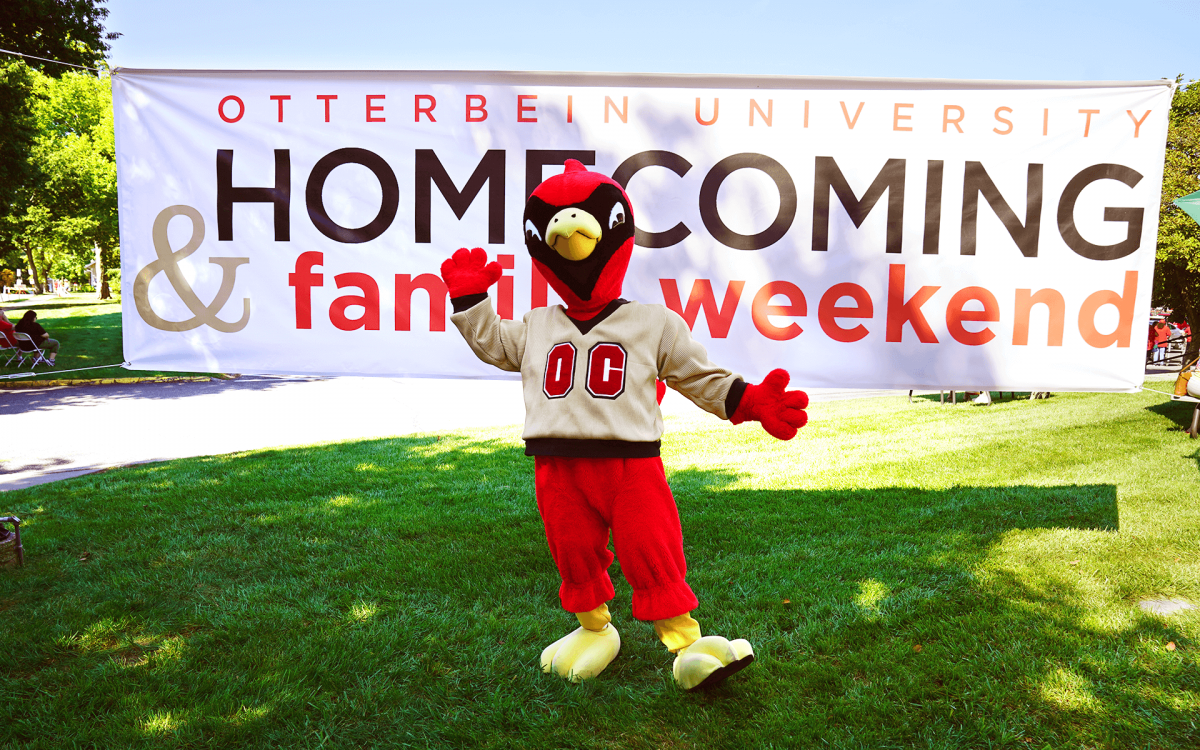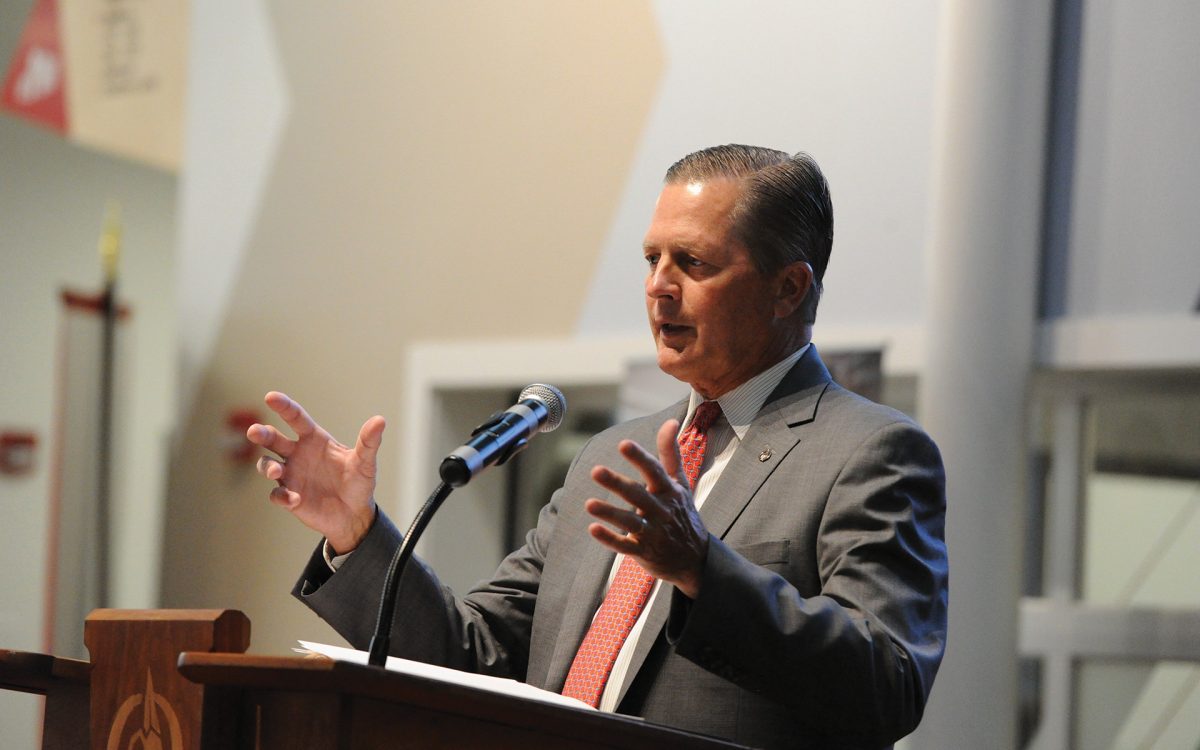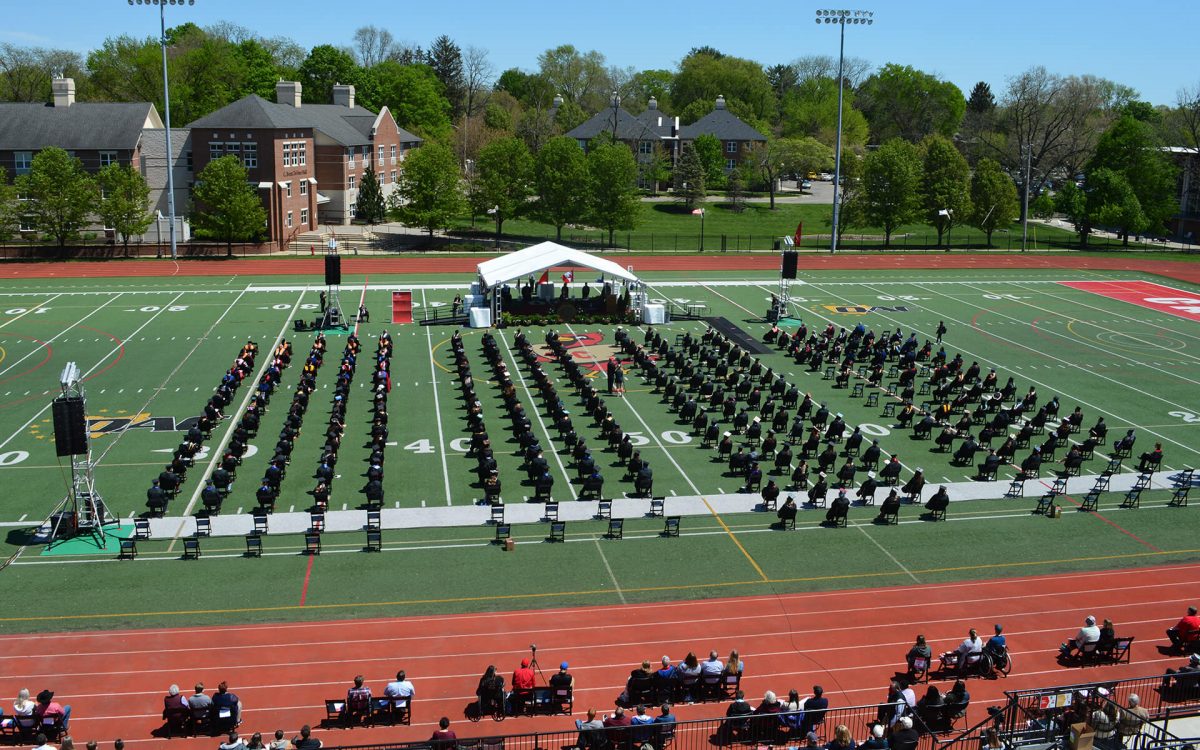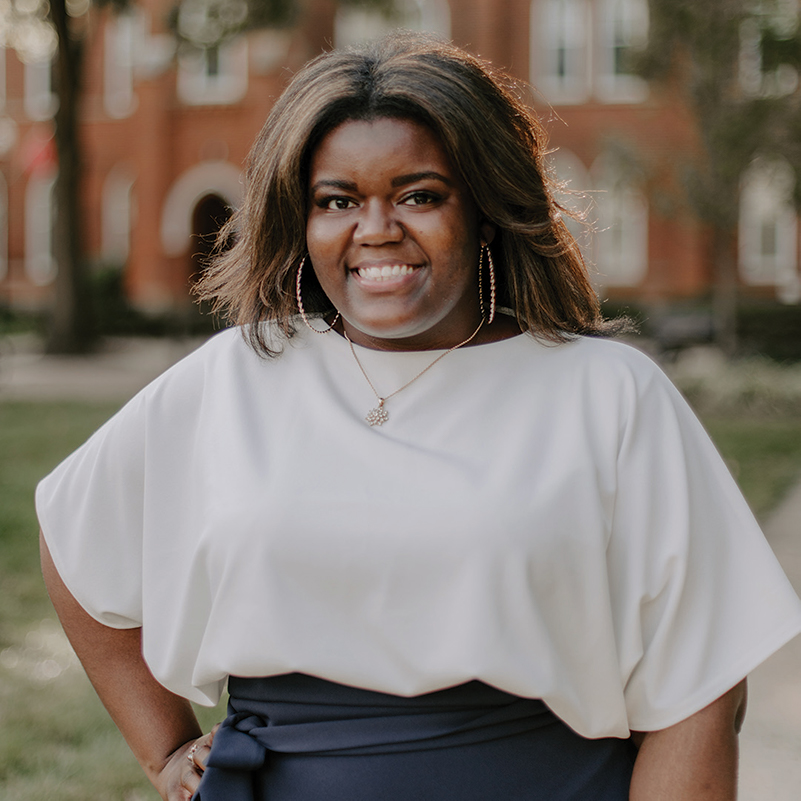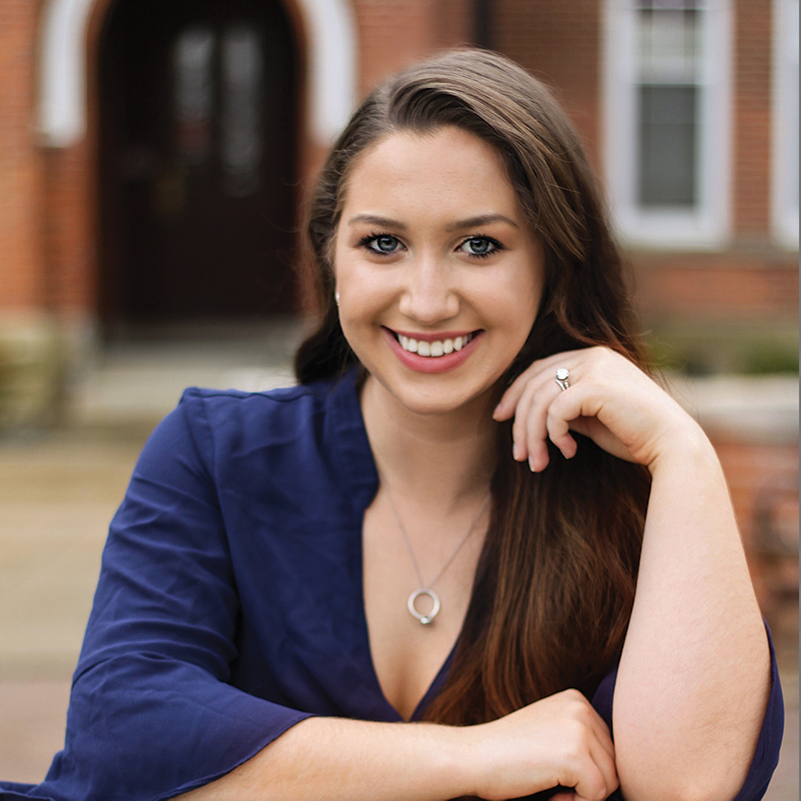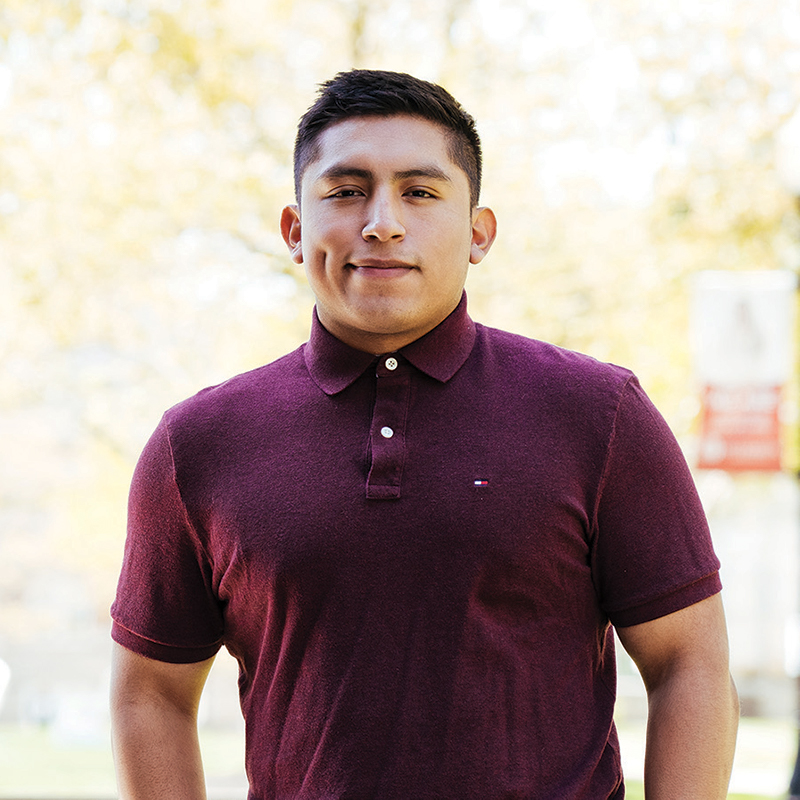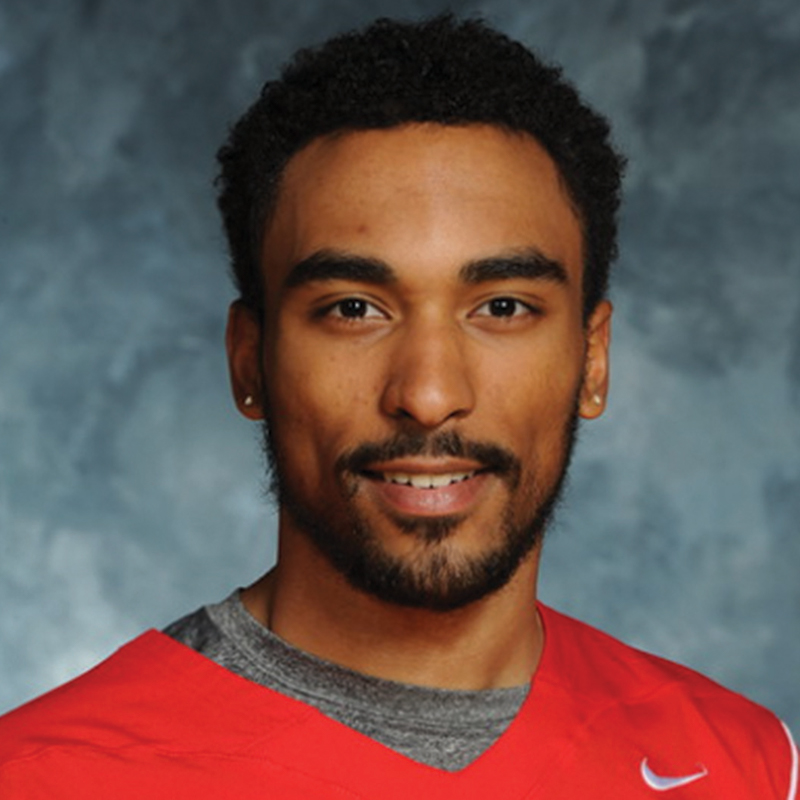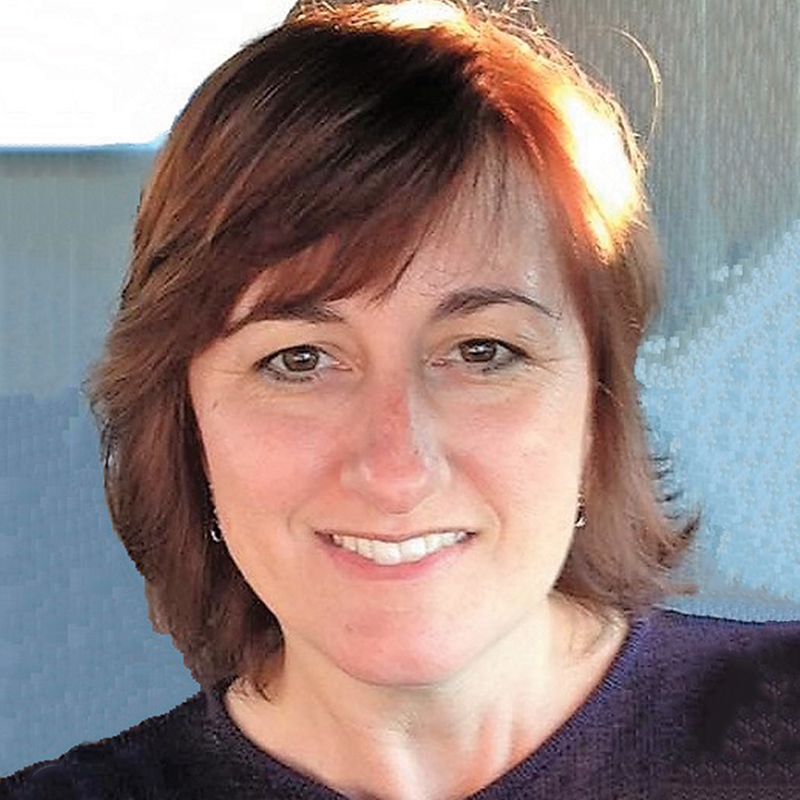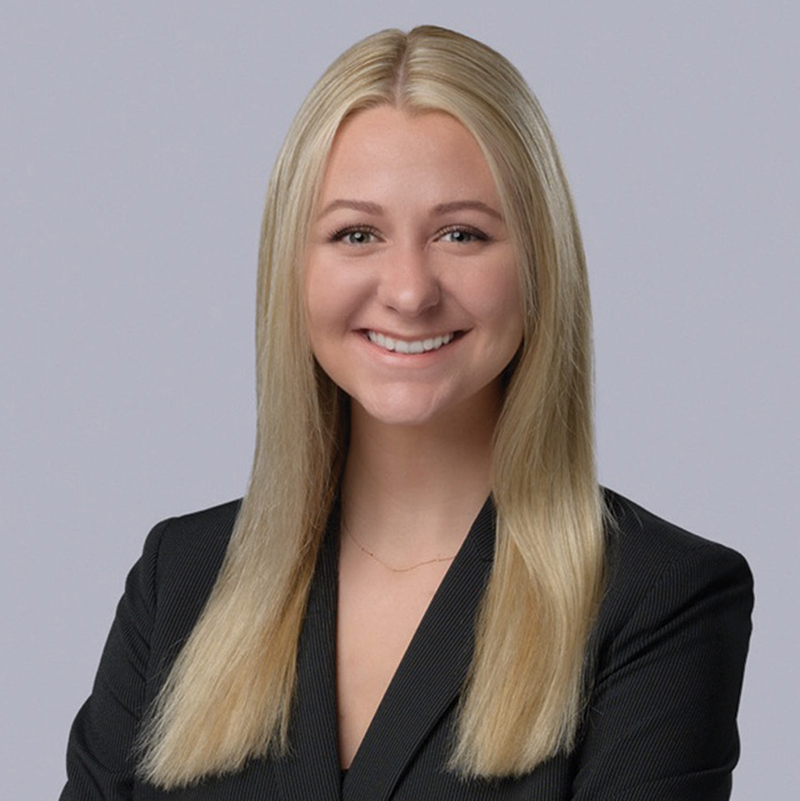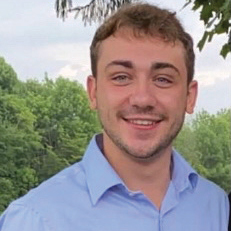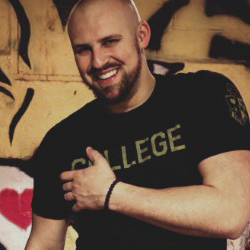BOLD
Beginnings
WE WILL NOT BE STILL
Both of Otterbein’s founders knew the value of an education. Lewis Davis is regarded as the father of higher education in the United Brethren Church. William Hanby was dedicated to his faith, his love of education, and his hatred of the injustice of slavery. Hanby and Davis were active members of the Underground Railroad.
Beneath Otterbein’s humble exterior is a bold institution forged by moral intelligence. Lewis Davis didn’t learn to read until he was 18, taught only by a blacksmith who believed in his potential. William Hanby spent the first 19 years of his life as an indentured servant until he escaped his abusive master. The experiences of Otterbein’s founders sparked their lifelong commitment to education, opportunity, and social justice – values that remain at the heart of this University 175 years later.
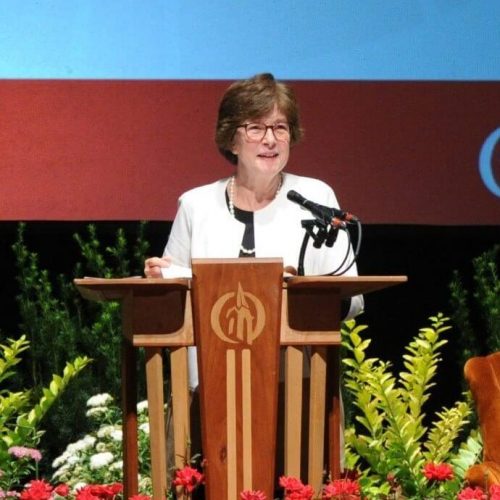
“All institutions have critical moments at which lie possibilities for the future. For Otterbein, such a moment came early when Lewis Davis was asked to raise money for a university and to win endorsements for it from the Sandusky and Muskingum Conferences of the United Brethren Church. The idea of a college thrilled Davis, but it set off a furious debate. Presiding over the Sandusky Conference at its meeting to discuss the matter, Bishop Russel opposed the establishment of Otterbein University. The bishop ordered Davis, “You be still.” Davis replied that he could not be still. A parliamentary battle followed in which Bishop Russel attempted to rule Davis out of order whenever he rose to speak. But in the end the convention voted for Otterbein. Davis traveled to Muskingum where he met his nemesis again and was told, as before, to “be still.” But Davis was not still, and the Muskingum Conference endorsed Otterbein the following year. Because he refused to be still, Davis secured the backing of the church and Otterbein would exist. Davis became the first president of the Board of Trustees, served for 18 years as Otterbein’s president, and was honored as the father of higher education in the United Brethren Church.”
– Kathy Krendl H’18,
President emerita, excerpted from her inauguration address, 2009
“At the General Conference of the United Brethren in Christ Church in 1845, William Hanby was elected 15th bishop of the church. Church and Otterbein leaders faced opposition to the plan of making education available to all genders and races. Bishop Hanby persevered in advancing his ideas. The fall 1847 student body was composed of four males and four females. The first graduating class in 1857 was two women. Hanby survived the bondage of indentured servitude — an experience that fired his hatred of bondage and slavery. This same boy was denied an education, and later taught himself to read and write to such a skill level as to enable him to write sermons and to write and edit articles for the church newspaper. Otterbein continues to resist injustices, promote learning for all, and to reach out and welcome diverse students to the benefit of all. Bishop Hanby had three main focuses in his life: his faith, his love of education, and his hatred of the injustice of slavery.”
– Pam Allen ’96
Former manager of the historic Hanby House
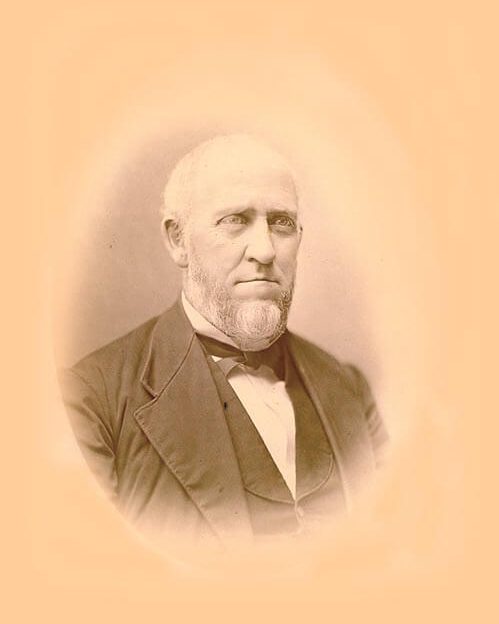
Lewis Davis
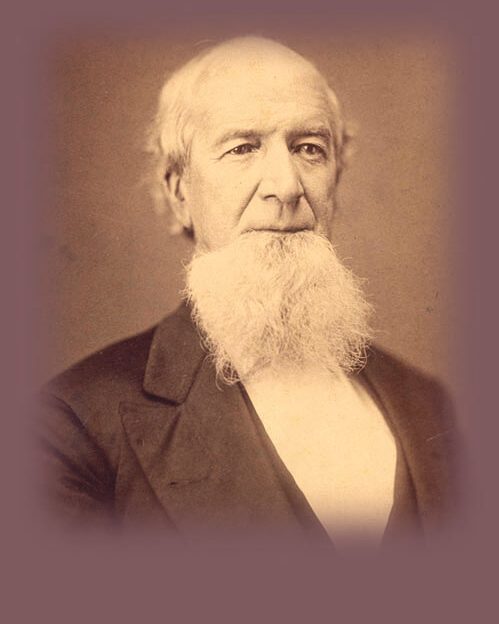
William Hanby
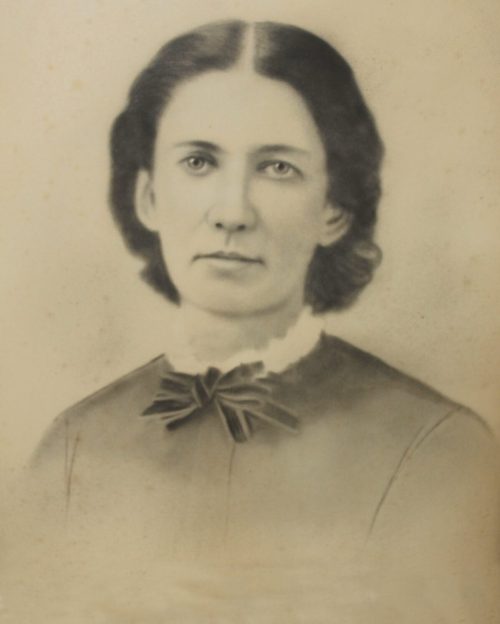
Sarah Jennie Miller
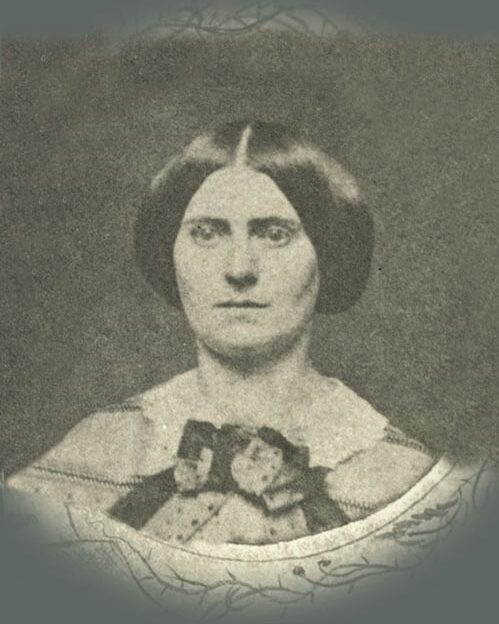
Mary Katherine Winter Hanby
Rewriting the
RULES
HONORING A TRADITION OF BUCKING TRADITION
Since its founding in 1847, Otterbein has quietly been setting the pace in higher education. Those at the helm of each innovation likely didn’t see themselves as rule-breakers. But Otterbein leaders have a history of rewriting the rules with the intention of doing things better, smarter, and ensuring more opportunity. Read reflections from those with a front-row seat to some of Otterbein’s most inspired practices.
SHARED GOVERNANCE
Otterbein was one of the first in the nation to give students a voice and a vote in institutional decision-making.
“I was asked to form and chair the student committee on college governance. We asked for equal representation in the college senate, some representation on committees, and seats on the Board of Trustees. There were meetings with other committees and presentations to the student body. A joint plan emerged. This would not have happened without the openness of this university — its trustees, administration, and faculty — to new ideas, new balance, and new equity.”
-Terry Goodman ’70
Trustee emerita
INTEGRATIVE STUDIES
Otterbein’s Integrative Studies program is a nationally recognized general education curriculum celebrated as a groundbreaking model when it originated in 1969.
Integrative Studies, from its beginning as the Common Courses, was and still is, in my view, Otterbein’s most important contribution as a leader in higher education. Today’s INST curriculum continues that contribution, guiding students through its current theme, Knowledge, Action, and the Public Good.”
– Alison Prindle H’10,
Professor emerita, English and Integrative Studies
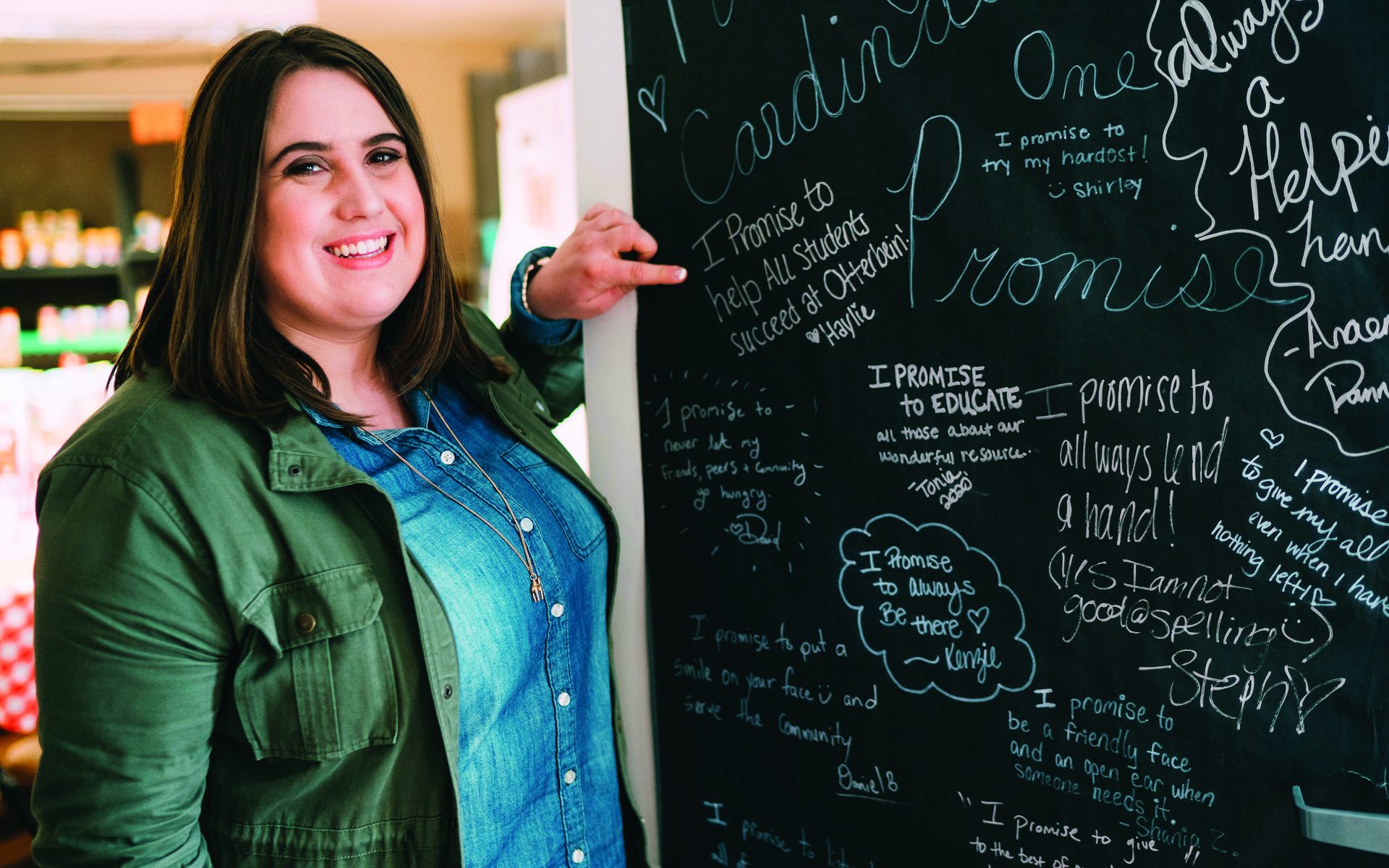
Promise House
ADVANCING THE GREATER GOOD
Service leadership is an Otterbein tradition. Formalized efforts in the 1990s ensured Otterbein’s recognition among the nation’s best for its commitment to community service and engagement. “
“The creation of the Center for Community Engagement (CCE) set Otterbein apart. With key campus leaders’ work, Otterbein received a federal grant to help create the CCE, hire our first (and current) director, and work closely with our core community partners and faculty to develop service-learning courses. CCE student leaders also established the Promise House, our student-led community resource center and food pantry. We were among the earlier small colleges to address food insecurities for students.”
-Bob Gatti H’03
Vice president and dean of students emeritus
ACCESS AND AFFORDABILITY
Known as a school of opportunity, Otterbein has a historic commitment to access. Whether co-education, students of color, firstgeneration, or those traditionally under-represented, Otterbein is committed to education as the great equalizer.
“I appreciate Otterbein’s focus on making education affordable and accessible for people who want to go to college. I am deeply passionate about providing opportunities – Otterbein’s mission really resonates with me.”
– Cheryl Herbert
Chair, Otterbein Board of Trustees
THE POINT
A convergence of education, community, industry, and government, The Point offers an evolving home to small, entrepreneurial start-ups and large industry innovations – all supported by hands-on faculty expertise and student talent.
“Creating The Point led to new programs and much more interaction with the Columbus business community.”
-Mark Thresher ’78
Chair emeritus, Otterbein Board of Trustees
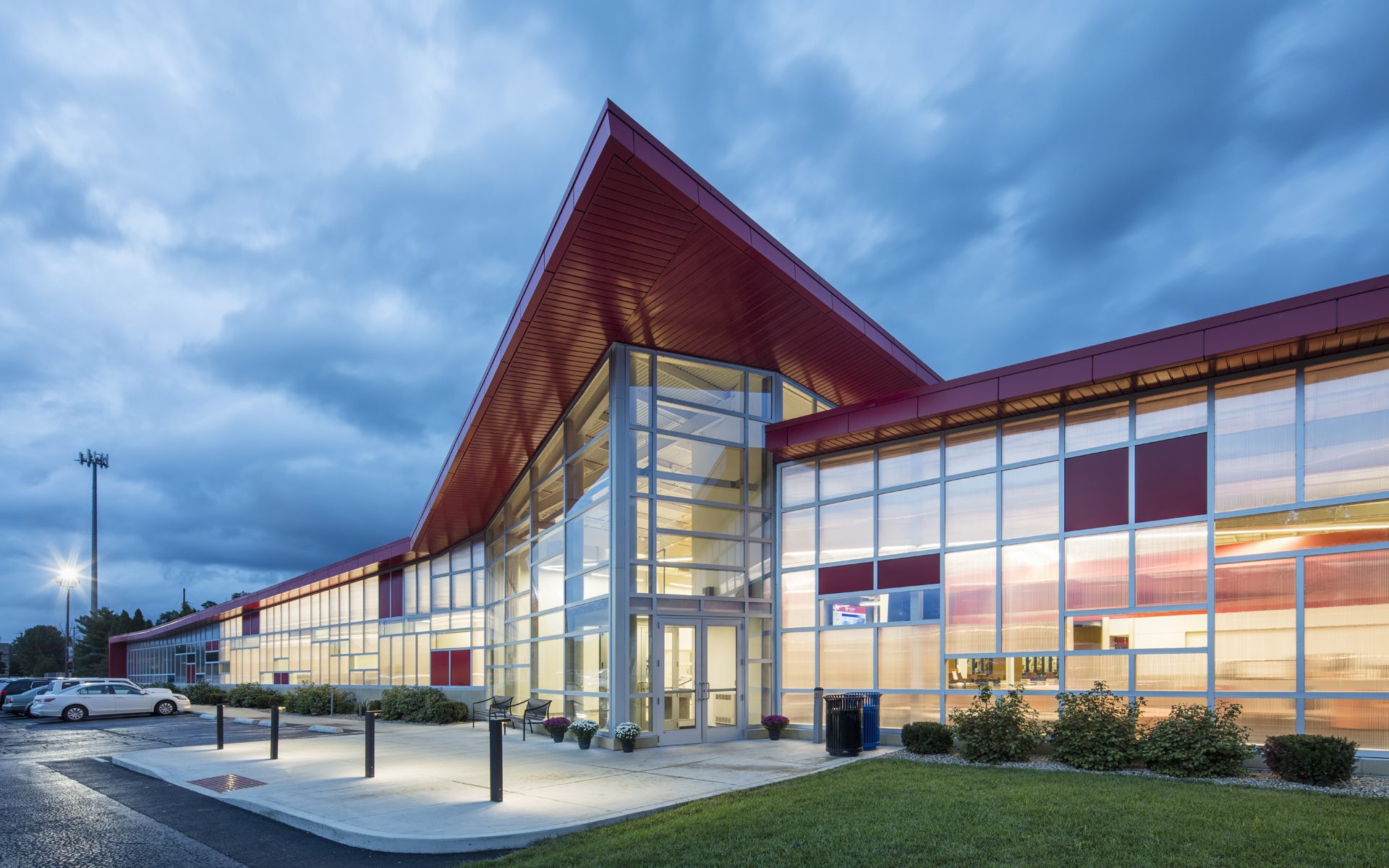
“Since its founding, Otterbein has been a model for all colleges and universities. Unpretentious. Open to all. Supportive of all. Faculty and staff with diverse talents yet with a shared goal of student success. Students first. Always.”
A History of Striving
to Do Things Right
In 1847, Otterbein was founded by abolitionists who believed in the equality of all humans, regardless of gender, race, religion, or nationality. That spirit of striving to do what’s right is alive and continuing on campus today.
“From the early admittance of women and persons of color to recent policies toward diversity and inclusion, Otterbein has been far ahead of other institutions.”
Mindy Phinney ’85, Otterbein Board of Trustees
“Otterbein does not run from diversity; it has remained true to its humble beginnings. As the University celebrates 175 years, I challenge everyone in the Otterbein family to remain committed to the principles that were part of its founding in 1847 – to provide opportunity for all and produce well-rounded leaders who make an impact in their communities.”
– Eddie Harrell ’94, vice chair, Otterbein Board of Trustees
DIVERSITY AND INCLUSION
Otterbein’s founders, Bishop William Hanby and Rev. Lewis Davis, were active members of the Underground Railroad along with Hanby’s son, Benjamin, who wrote the anti-slavery ballad Darling Nelly Gray. Despite these roots, Otterbein’s first Black student felt far from welcome. William Hannibal Thomas enrolled in 1859 but left in 1860 after suffering discrimination and abuse. In 1893, William Henry Fouse became the first Black student to graduate from Otterbein. He was popular and active on campus. His commencement speech, A Plea for the Afro-American, highlighted his vision of equality and freedom for all. He had a distinguished career in education.
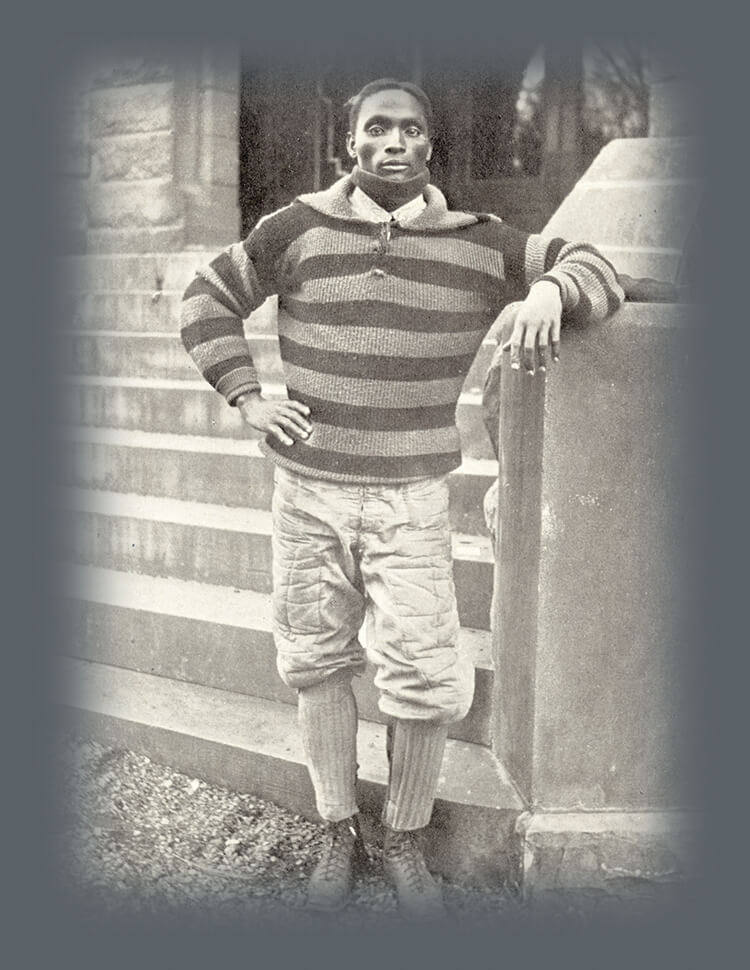
Joseph Hannibal Caulker
In 1896, the first international student enrolled. Born in Sierra Leone, Joseph Hannibal Caulker was introduced to Otterbein by United Brethren missionaries. A beloved member of the community Caulker died in a tragic oil stove explosion in 1900. He is buried in the Otterbein Cemetery. More than a dozen Caulker family descendants were among the 30+ students from Sierra Leone who have attended Otterbein. Imodale Caulker-Burnett ’63 was one of few Black students on campus and encountered racism, but she also found acceptance and made lifelong friends. “Otterbein gave me my first lessons on life in America and how to deal with the issues of the day. It provided a secure environment in which to grow.”
The first Japanese student, Kiyoshi Yabe, graduated in 1912. Later, Otterbein enrolled Japanese-American students from internment camps during World War II. Mary Ariki Shiba ’44 was so welcomed on campus that her brother, Joe Ariki ’46, also enrolled. Today, 23% of students are people of color.
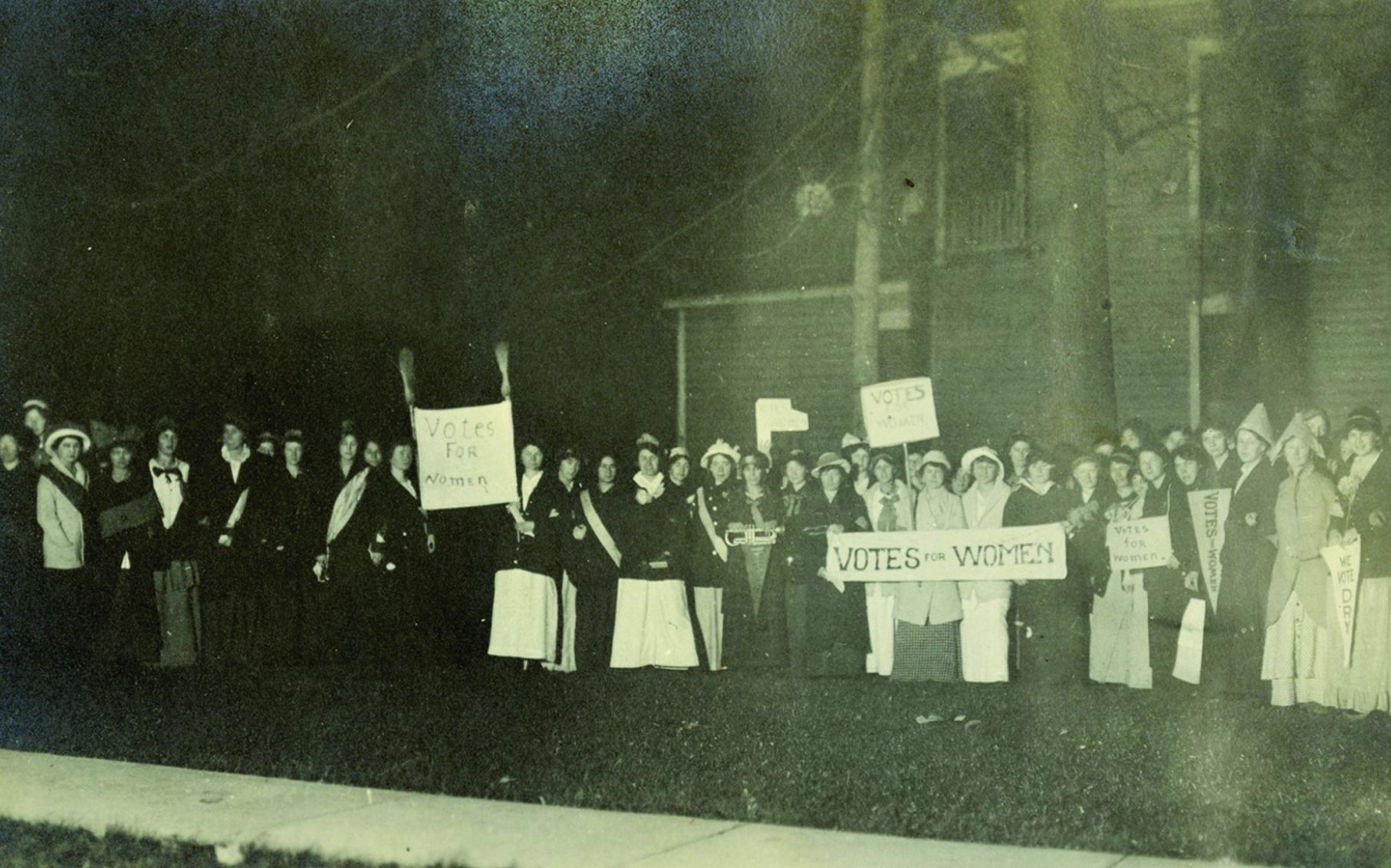
SUFFRAGETTE CITY
Suffragette, industrialist, and philanthropist Sarah B. Cochran funded the construction of a women’s dormitory in 1907. The residents of Cochran Hall led suffrage marches: “The eve of the election . . . witnessed a remarkable parade intended to encourage the devotees of women’s suffrage and to convert those opposed to this national need.”
(Otterbein Review, Nov. 9, 1914)
STUDENTS FIGHT
FOR CIVIL RIGHTS
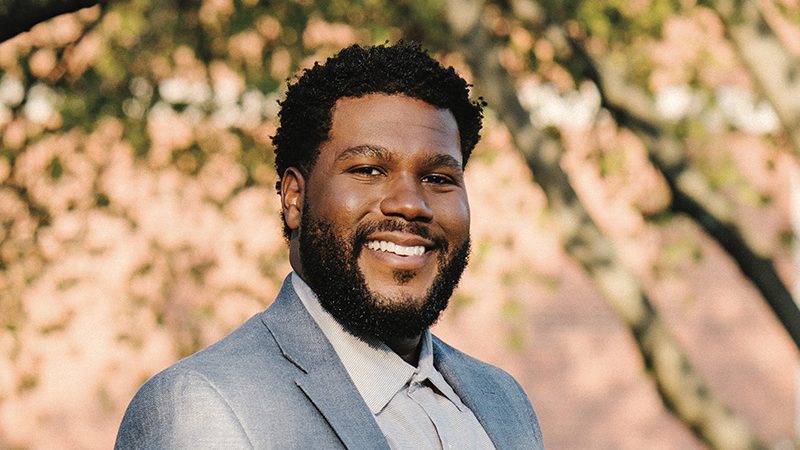
Desmond Fernandez ’21 organized peaceful Black Lives Matter marches in Westerville in 2020 when he was a senior theatre major. “What I thought was going to be maybe 50 people was almost 1,000 people,” he said. “It was inspiring. Not only was I protesting with my classmates, I was protesting with my teachers.”
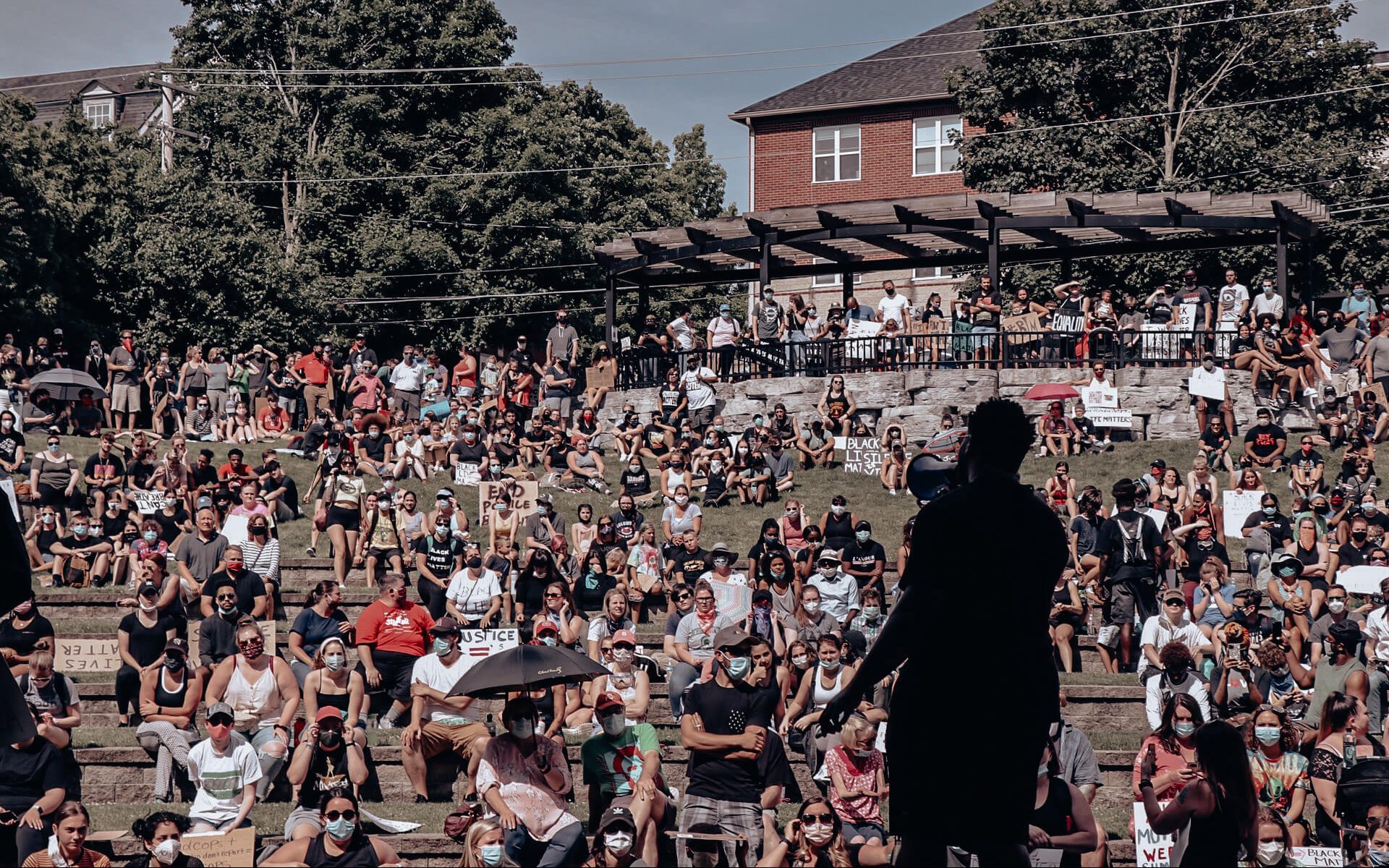
GENDER REPRESENTATION
Otterbein included women as faculty members and students from its founding — and was among the first colleges in the nation to do so. Otterbein’s first graduates were two women, Sarah Miller and Mary Katherine Winter.
The Otterbein community championed suffrage long before women on the right to vote in 1920. Professor Miriam Cole wrote in 1873: “It is said, ‘Interest in women’s suffrage is dying out.’ This is not true. Our students are asking questions with a desire for intelligent answers. The distance between men and women is lessening every year.”
Despite Otterbein’s founding principles, the first woman president, Kathy Krendl, was not hired until 2009, and the first woman chair of the Board of Trustees, Cheryl Herbert, was appointed in 2021. President Emerita Krendl championed women’s issues. She developed and taught a women’s leadership course to a select group of first-year students, called Miller Winter Scholars. Provost Wendy Sherman Heckler now teaches the course. “Being exposed to prominent women so early on encouraged me to reshape my perspective, be a leader, and connect with other professionals,” said Regan Donoughe ’17. In recent years, Otterbein has focused on supporting all gender identities. The Women’s, Gender, and Sexuality Studies program has been an advocate and spearheaded the addition of gender-neutral restrooms on campus years before other schools. In 2015, Tau Delta became Otterbein’s first gender-neutral Greek chapter. “I am proud to be a part of a sorority where we welcome all identities – everyone deserves to find a home here at Otterbein,” said former president Reyana Bates ’21.
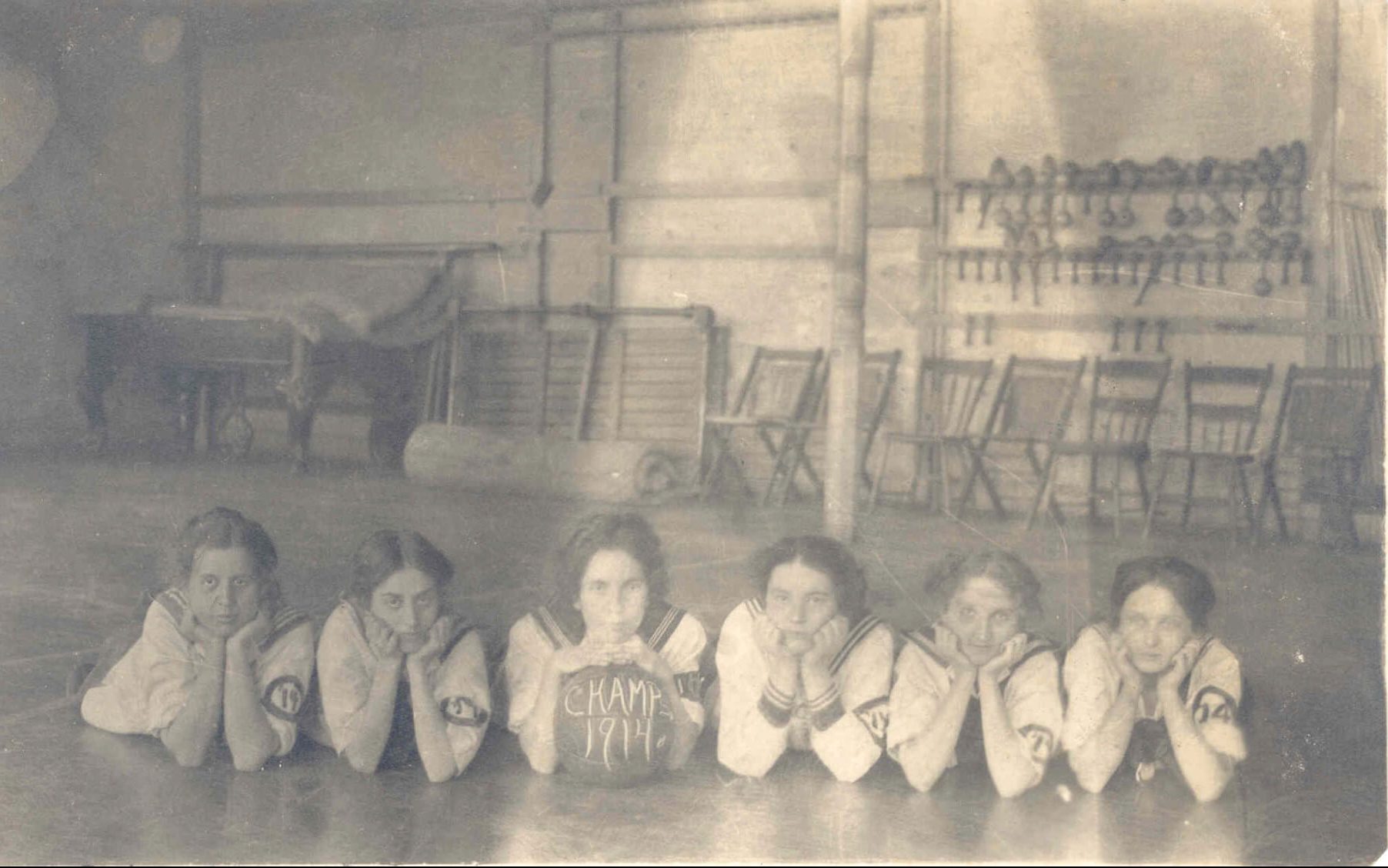
Women’s 1913 basketball team
SOCIAL JUSTICE
In the 1960s and 1970s, a wave of student activism swept the country. At Otterbein, students volunteered in under-served communities and protested the Vietnam War. They created organizations such as SOUL, which led programs and discussions about racial issues, and the Environmental Action Committee, which planned activities for the first Earth Day. And they participated in Otterbein’s shared governance system.
Today, students are more active than ever. The African American Student Union is celebrating 35 years. FreeZone brings awareness to LGBTQIA+ issues. Students sit not only on the University Senate, but also the Board of Trustees.
These students are supported by the work of James Prysock ’09, MBA ’19 and the Office of Social Justice and Activism. “We all have a responsibility and a role in social justice work,” he said. “We encourage people to get involved on campus and in your home community.”
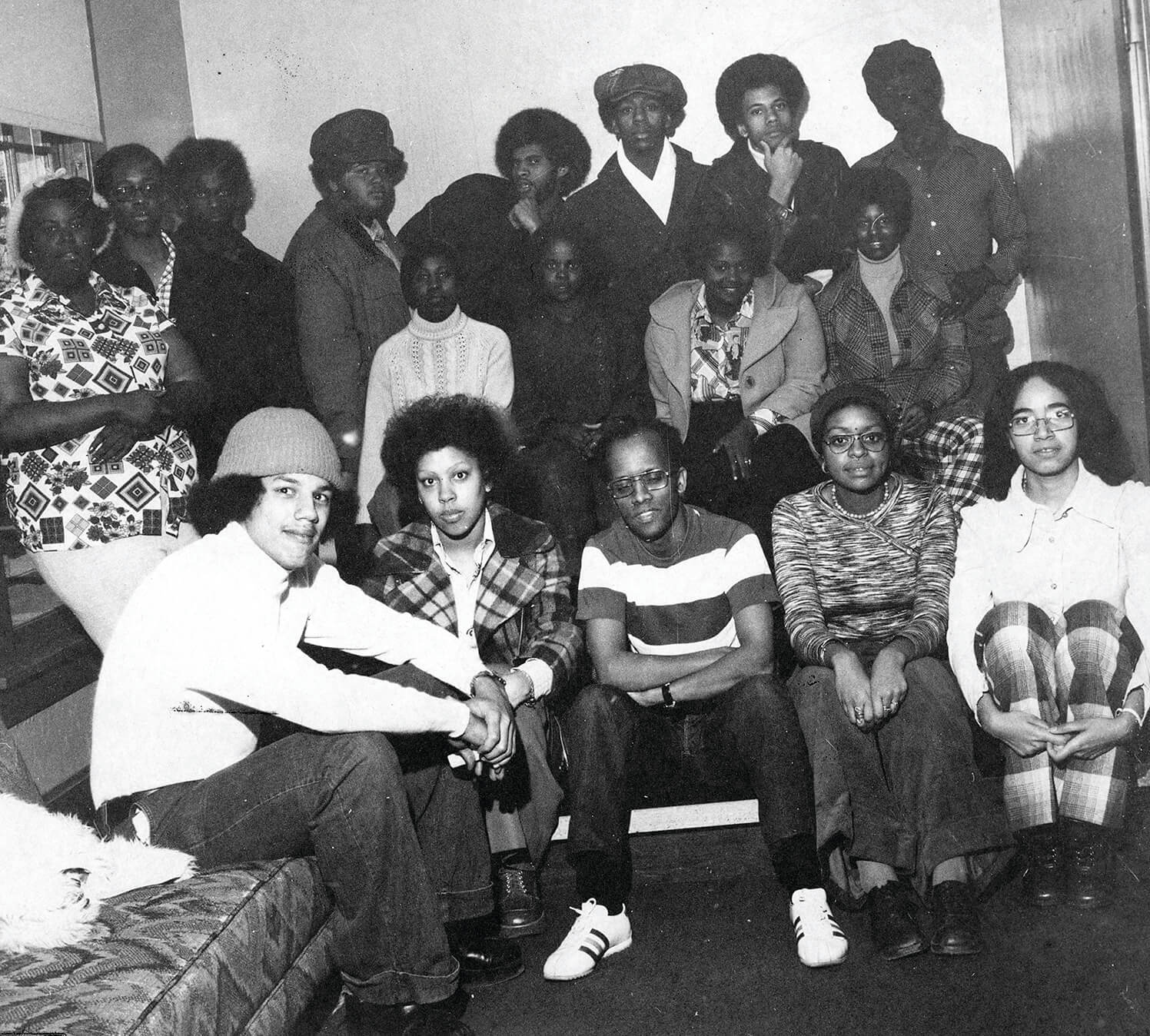
SOUL 1974-75

STUDENT LIFE &
TRADITIONS
FOR THE GOOD OF OUR STUDENTS
The balance between academics and student life defines the Otterbein experience. “There was no getting lost at Otterbein,” said Debbie Ewell Currin ’67, “The ability to get to know people — for a shy girl from Cincinnati — was easy, and the warmth and encompassing feeling reached out to me, and never let go. Knowing professors would be there if I needed help and having people believe in me was encouraging. Forming lifelong friendships and meeting my husband was life changing. Best of all, having a curriculum that prepared me so well for my chosen profession to be an elementary teacher was something I benefitted from for years ahead.” While that close-knit community has remained constant, the activities and interests of students have evolved over the years.
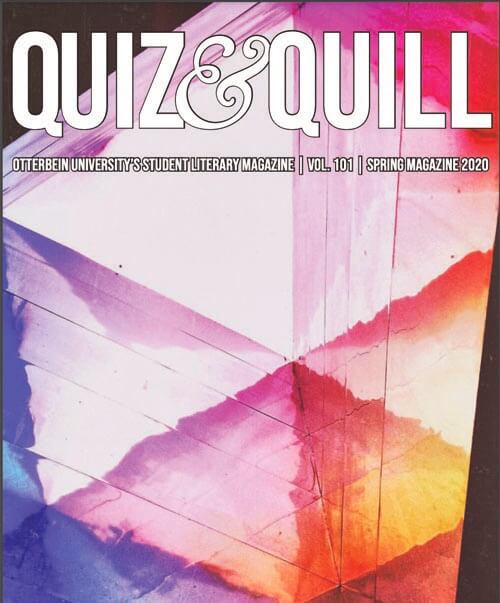
FIRST SOCIAL ORGANIZATIONS
The first literary society was established in 1851 for students to socialize around a common interest. By 1872 there were four societies — two for men and two for women. Groups of friends from these societies formed underground social clubs, resulting in the first fraternities, Pi Kappa Phi and Pi Beta Sigma, in 1909, and the first sorority, Sigma Alpha Tau, in 1910. These “secret societies” were disbanded by the administration in 1916 — but the trustees later had a change of heart, allowing social clubs on campus in 1921.
In 1932, they were permitted to use Greek letters. By 1948, more than 80% of students participated in Greek life. Today, 20% of students participate. Otterbein’s literary societies also began a strong tradition of student media, publishing The Otterbein Aegis in 1890, The Otterbein Review in 1909, and The Tan and Cardinal in 1917. Otterbein’s radio station began broadcasting on March 5, 1948. Today, there are dozens of groups on campus for academic and professional interests, community service, creative and artistic expression, and the celebration of culture and diversity.
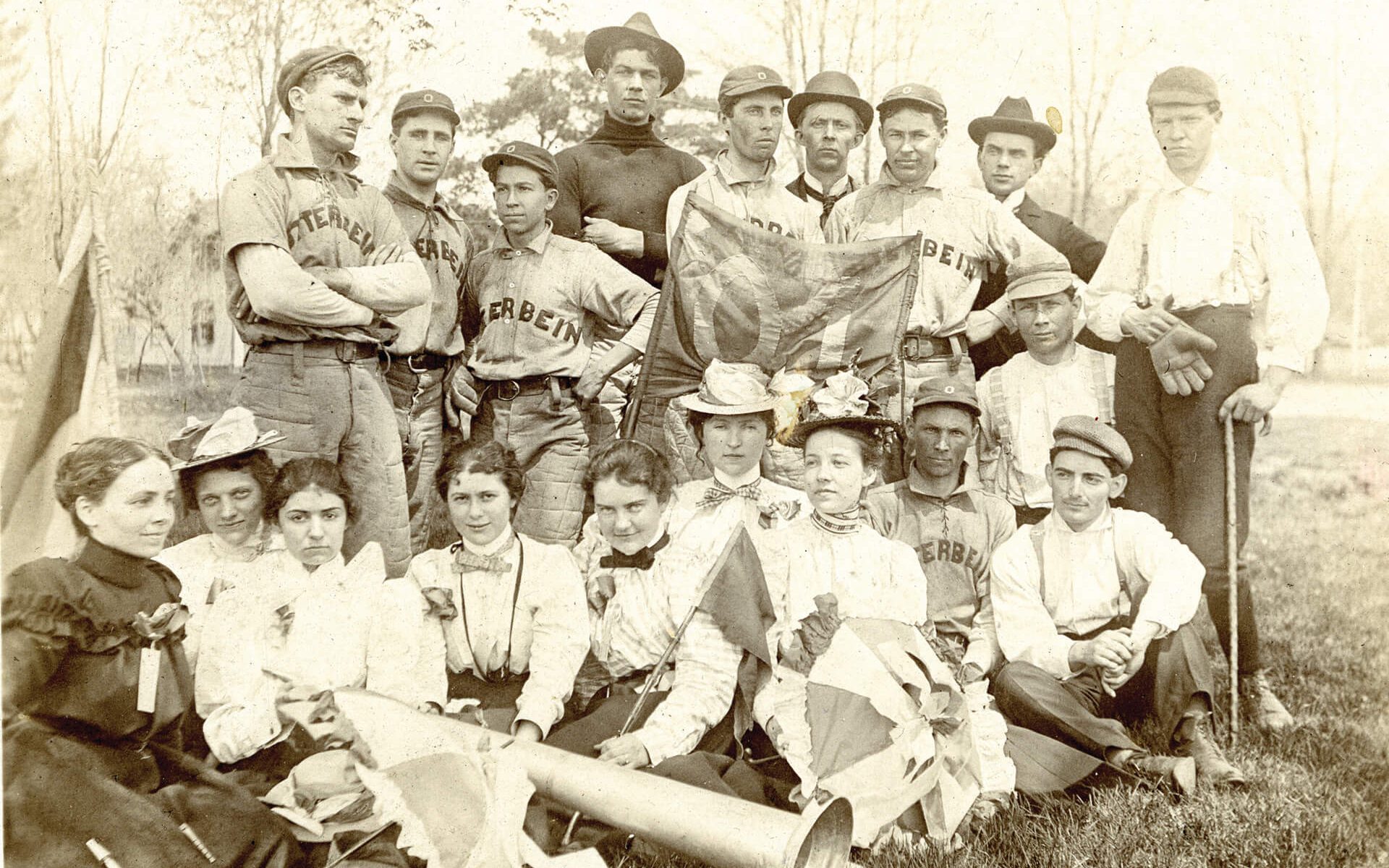
Students in 1901.
COMMON GOOD
Bob Gatti H’03, vice president and dean for student affairs emeritus, served Otterbein’s students from 1978-2019. “I feel our students look after each other and genuinely care. Our students will always step up to take care of others.”
Organized community service took root on campus in the 1990s. Beginning in 1994, the Indianola After-School Project and Linmoor Middle School Project brought Columbus students to campus for weekly tutoring, recreation, and meals with Otterbein students. The Community Plunge started in the 1990s to introduce new students to Otterbein’s core value of service and continues today.
In 2007, Otterbein was one of four universities in the nation to receive the Presidential Award for Volunteer Service. The Center for Community Engagement opened the Promise House, a food pantry and resource center for students, in 2016. “This is a remarkable symbol of Otterbein’s heart in action. Community members give generously to the Promise House to lift student success, tackle food insecurity, and support everyday basic needs,” said Becky Fickel Smith ’81, executive director of alumni relations emerita.
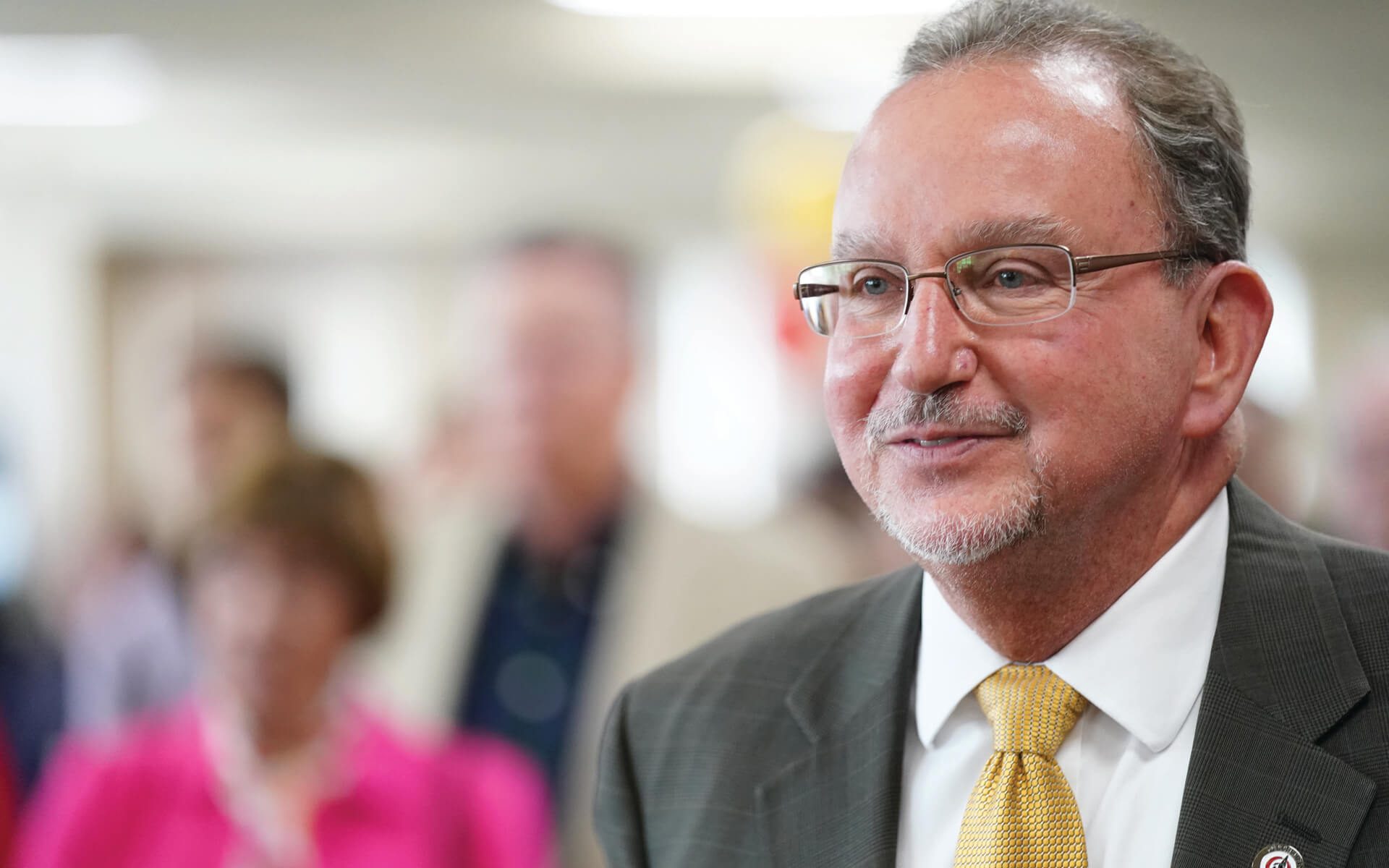
“We all have a responsibility and a role in social justice work.”
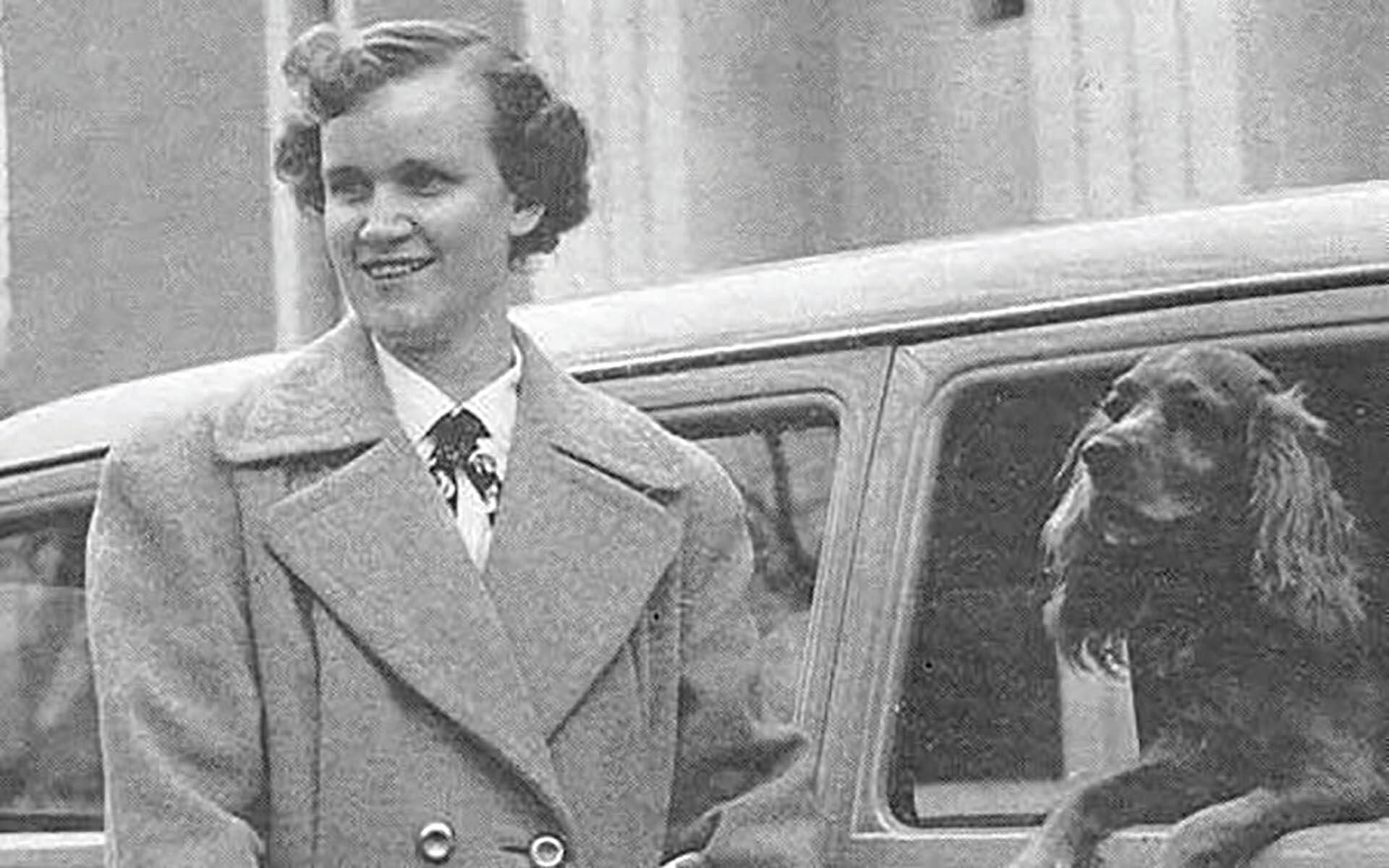
Joanne Van Sant was hired in 1948 by the Women’s Physical Education Department. “Dean Van” served as dean of women, dean of students, and vice president for student affairs before retiring in 1992.
FUN AND GAMES
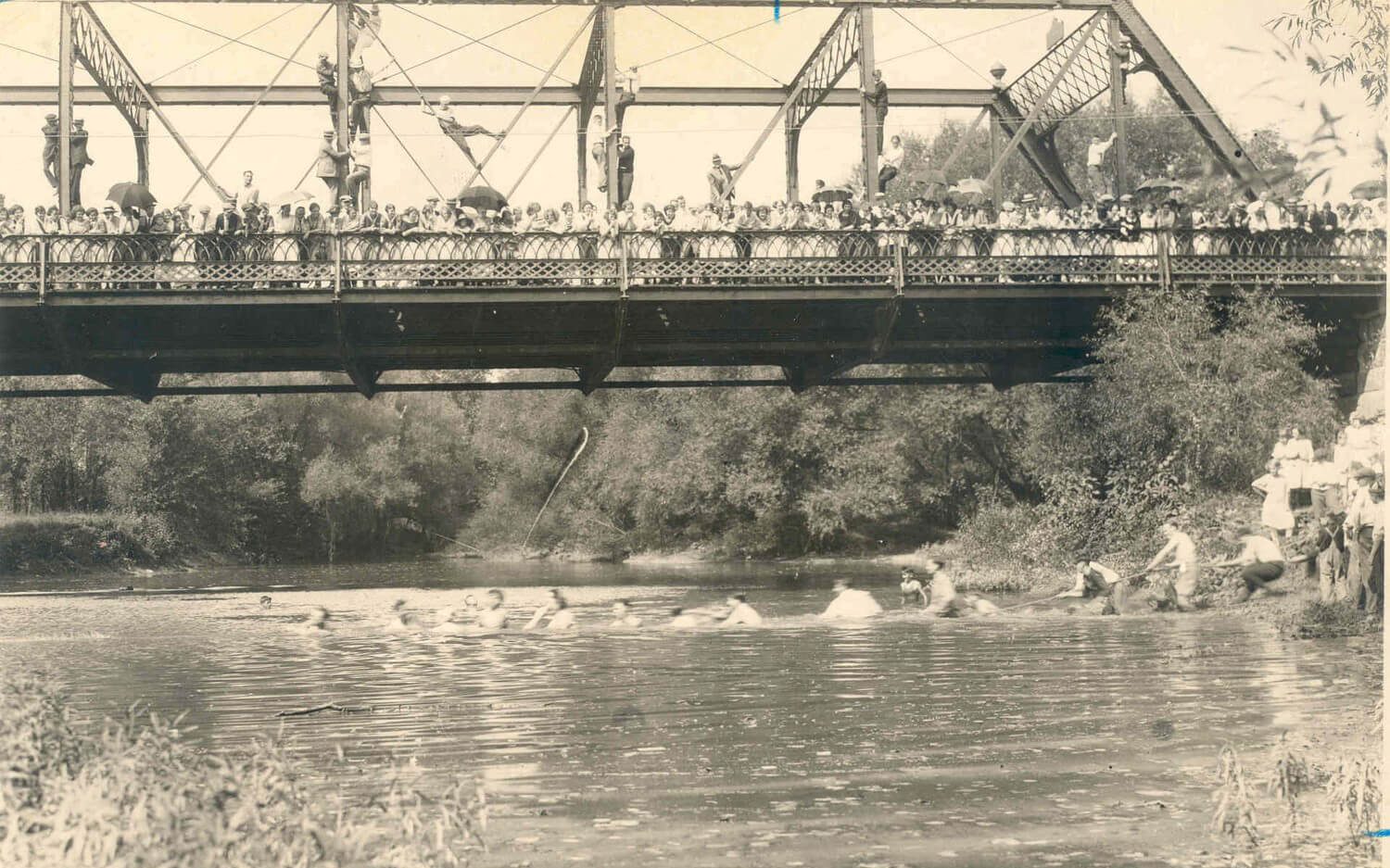 Scrap Day started in 1915 as a day of fun with a series of competitive field events, including tug-of-war across Alum Creek, sack races, and a bonfire. At that time, freshman students were required to wear beanies for group bonding — and as a source of teasing from upperclassmen. If the sophomores won the scrap day competitions, freshmen had to wear their beanies until Christmas, instead of Thanksgiving. The day was usually rigged against the freshmen. In the 1940s and 1950s, popular activities included “Coke dates” in Uptown Westerville and hanging out at the “Otterbarn” – an Army surplus building that served as the first student center. Their options were somewhat limited. Joanne “Dean Van” Van Sant H’70, dean of students emerita, once recalled: “No dancing was allowed on campus. No drinking of alcoholic beverages. Women had curfews and signed out and in. Chapel was held four days a week; attendance was mandatory with five absences allowed per semester. To miss more meant adding hours to your graduation requirement.” Because of the restrictions, students left campus for fun. They attended dances at the Westerville Armory and crossed the border to socialize at a Columbus bar called the Garden Inn, which remained a frequent destination through the 1990s. Since the early 1970s, late-night donut runs to Schneider’s Bakery have been one of the most popular Otterbein traditions. Mary Miller Westfall ’75 told Towers in 2000: “Women had to be in the dorm by midnight. Girls used to sneak out of the basement windows in King Hall at one or two in the morning for donuts.” Otterbein’s signature event, Homecoming, was recorded in The Tan and Cardinal as far back as 1917. In 1933, the first Homecoming queen, Marjorie Bowser ’36, was crowned. Today, Homecoming royalty are nominated by student organizations and voted on by the student body. Guests to Homecoming and Family Weekend celebrate with a parade, class reunions, tailgating, festival food and games, football — and, starting in 2021, a beer garden.
Scrap Day started in 1915 as a day of fun with a series of competitive field events, including tug-of-war across Alum Creek, sack races, and a bonfire. At that time, freshman students were required to wear beanies for group bonding — and as a source of teasing from upperclassmen. If the sophomores won the scrap day competitions, freshmen had to wear their beanies until Christmas, instead of Thanksgiving. The day was usually rigged against the freshmen. In the 1940s and 1950s, popular activities included “Coke dates” in Uptown Westerville and hanging out at the “Otterbarn” – an Army surplus building that served as the first student center. Their options were somewhat limited. Joanne “Dean Van” Van Sant H’70, dean of students emerita, once recalled: “No dancing was allowed on campus. No drinking of alcoholic beverages. Women had curfews and signed out and in. Chapel was held four days a week; attendance was mandatory with five absences allowed per semester. To miss more meant adding hours to your graduation requirement.” Because of the restrictions, students left campus for fun. They attended dances at the Westerville Armory and crossed the border to socialize at a Columbus bar called the Garden Inn, which remained a frequent destination through the 1990s. Since the early 1970s, late-night donut runs to Schneider’s Bakery have been one of the most popular Otterbein traditions. Mary Miller Westfall ’75 told Towers in 2000: “Women had to be in the dorm by midnight. Girls used to sneak out of the basement windows in King Hall at one or two in the morning for donuts.” Otterbein’s signature event, Homecoming, was recorded in The Tan and Cardinal as far back as 1917. In 1933, the first Homecoming queen, Marjorie Bowser ’36, was crowned. Today, Homecoming royalty are nominated by student organizations and voted on by the student body. Guests to Homecoming and Family Weekend celebrate with a parade, class reunions, tailgating, festival food and games, football — and, starting in 2021, a beer garden.

Since the early 1970s, late-night donut runs to Schneider’s Bakery have been one of the most popular Otterbein traditions.
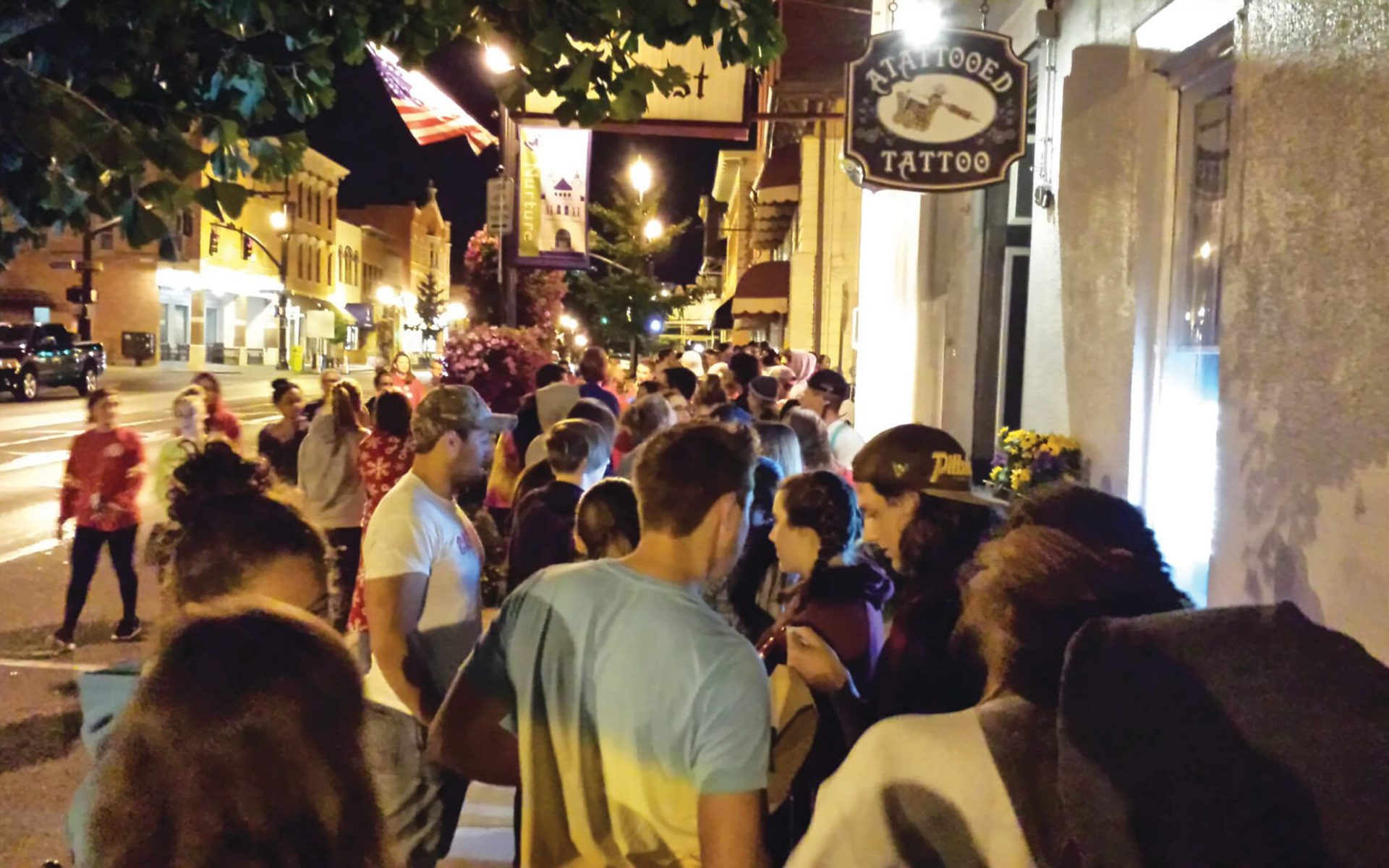
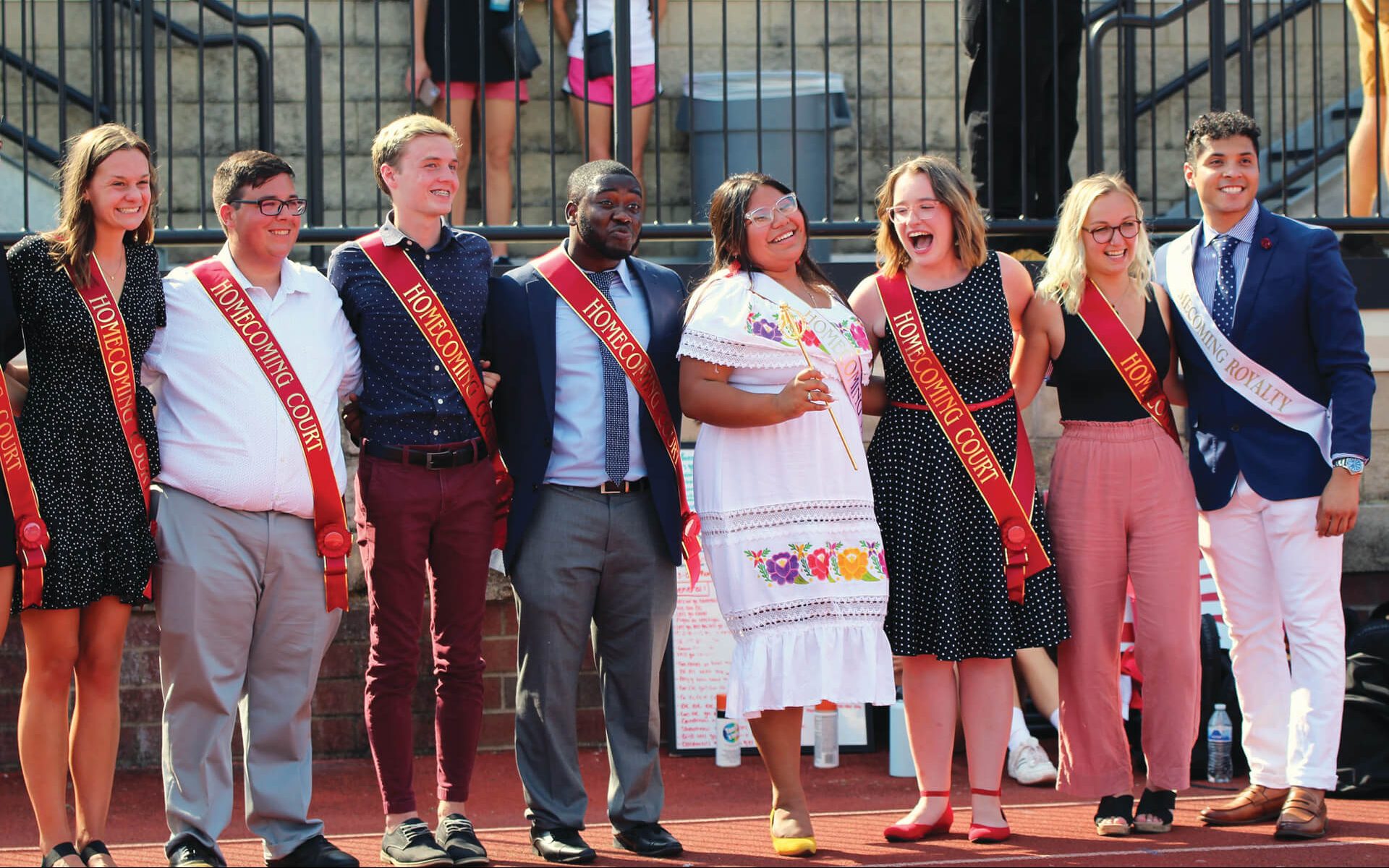
Homecoming Court 2021
ATHLETIC
TRADITIONS
WE ARE CHAMPIONS ON & OFF THE FIELD
One-third of Otterbein’s students compete on one of 21 NCAA Division III athletics teams, supported by coaches who are dedicated to their success on and off the field. “Coaches are in touch with a student athlete’s mental health, academic progress, family situation, financial situation, and the impact those things have on their lives,” explained Dawn Mamula Stewart ’98, vice president for student affairs and director of athletics. “It’s all about each student’s success.”
BEGINING OF ATHELTICS AT OTTERBEIN
Ernest Barnard, class of 1895, was known as the “Father of Otterbein Athletics.”
He was a founding member of the varsity football team in 1889 and led it to a winning season in 1891 — including a victory over The Ohio State University, 42-6. Barnard had a successful career in sport management and was elected president of the American League of Professional Baseball Clubs in 1927.
Otterbein’s first unofficial baseball team competed in 1882, defeating OSU, 10-8. The team was disbanded due to faculty concerns about safety but officially reorganized in 1892.
Faculty and students leveled the first sports field behind Towers Hall and marked it for football, baseball, and tennis.
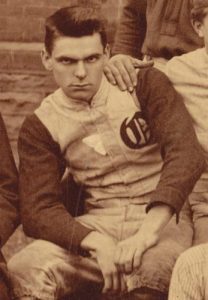
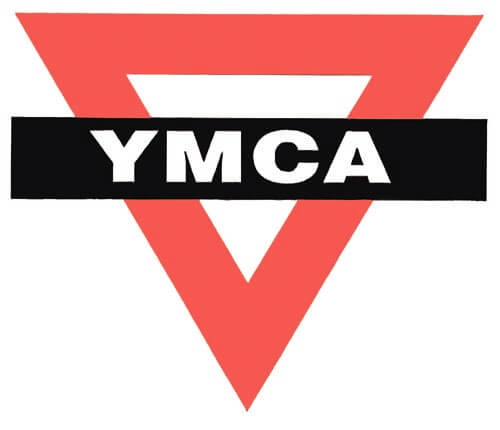
Otterbein was the first university in Ohio to have a YMCA chapter. It was established in 1877.
WOMEN’S ATHLETICS
Early athletics were far from equal. Basketball became the men’s third sport in 1899 and the women’s first sport in 1900. The first varsity letters were awarded to men in 1907, but women couldn’t earn them until 1926, and only for tennis and track. Title IX of the Education Act was enacted in 1972 and new federal resources allowed Otterbein women to compete in more sports, including volleyball, soccer, basketball, softball, track, cross country, and tennis.
In 1992, Dick Reynolds ’65 became director of athletics. That same year, women’s and men’s athletics merged into one Department of Athletics. “I hope I’m remembered for taking the women’s teams into the realm of competitive athletics with an equal opportunity to compete. That gives me personal satisfaction,” said Reynolds.
“I remember hearing Coach Reynolds say, ‘If you’re going to do it for the men, you’ve got to do it for the women,’” said Stewart. “As a young female student-athlete, that made an impression on me.”
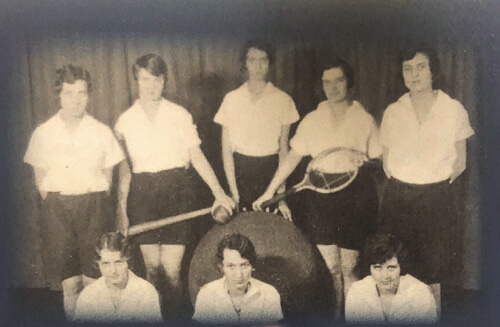
Women’s Tennis
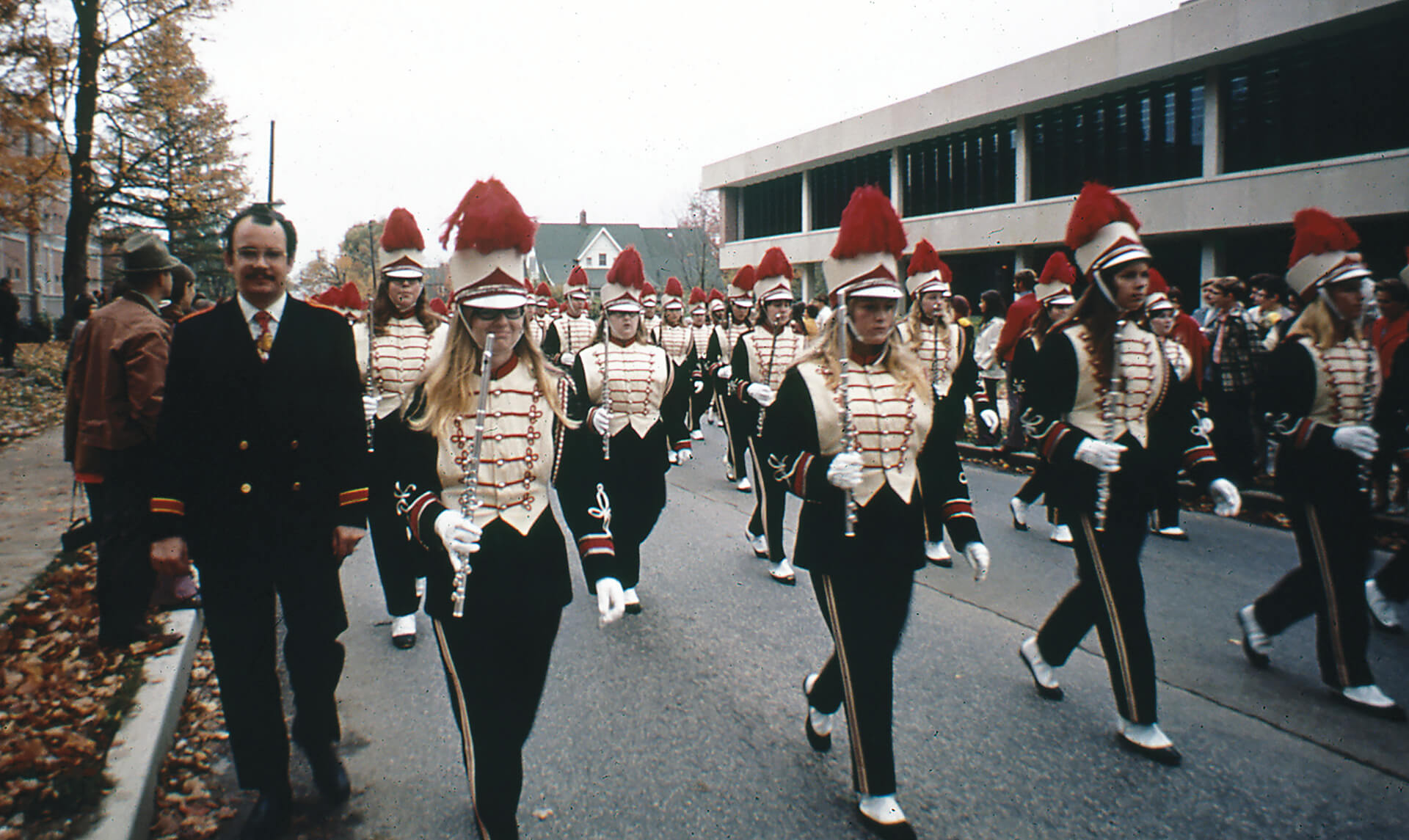
PROFESSOR GARY TIREY H’90 EXPANDED THE CARDINAL MARCHING BAND, WHICH PERFORMED IN EIGHT TELEVISED PROFESSIONAL FOOTBALL HALFTIME SHOWS BETWEEN 1970 AND 1990.
TRADITIONS
Otterbein joined the nation’s third-oldest conference, the Ohio Athletic Conference (OAC), in 1921 and currently competes against nine other OAC universities. Otterbein’s rivalry with Capital University, however, dates to 1894 when the Cardinals first played and defeated the Crusaders in football, 60-0. The tradition of a “Cap-Otter Trophy” began in 1932. In 1950, the trophy was dedicated to Otterbein student Robert Buck, who drowned in Alum Creek when a group he was with attempted to canoe to Capital to make mischief. It continued to be awarded until the late 1980s; the tradition began again in 2021. In a newer tradition, the Cole Victory Bell, donated by William ’54 and Barbara ’54 Cole in 2016, rings to mark Otterbein’s football victories.
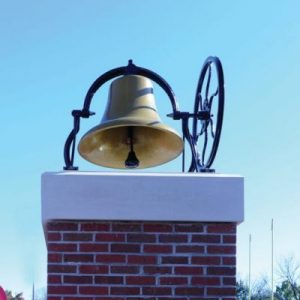
THE GREATEST GENERATION
After World War II, returning veterans formed an OAC champion football team, which finished the 1946 season with a 7-1 record and won all its conference games. Three members were drafted by NFL teams: Edwin “Dubbs” Roush ’47, Robert “Moe” Agler ’48, and Paul Davis ’48.
For many years, members of the 1946 team and other football alumni gathered regularly. “We named it the Leather Helmet Club. We had players come back who were in their 90s and played in the 1930s,” said Elmer “Bud” Yoest ’53, athletic director emeritus. “We talked about the fun we had, not how many games we won.”
The veterans also raised funds to build a new stadium. In 1948, Memorial Stadium was dedicated to honor the 13 men and one woman from Otterbein who lost their lives serving in World War II. Many of these same veterans raised funds as members of the “O” Club to replace the stadium in 2005. The “O” Club was established in 1955 under the leadership of Harold Augspurger ’41, Francis “Red” Bailey ’43, Dwight “Smokey” Ballenger ’39, and Roush.
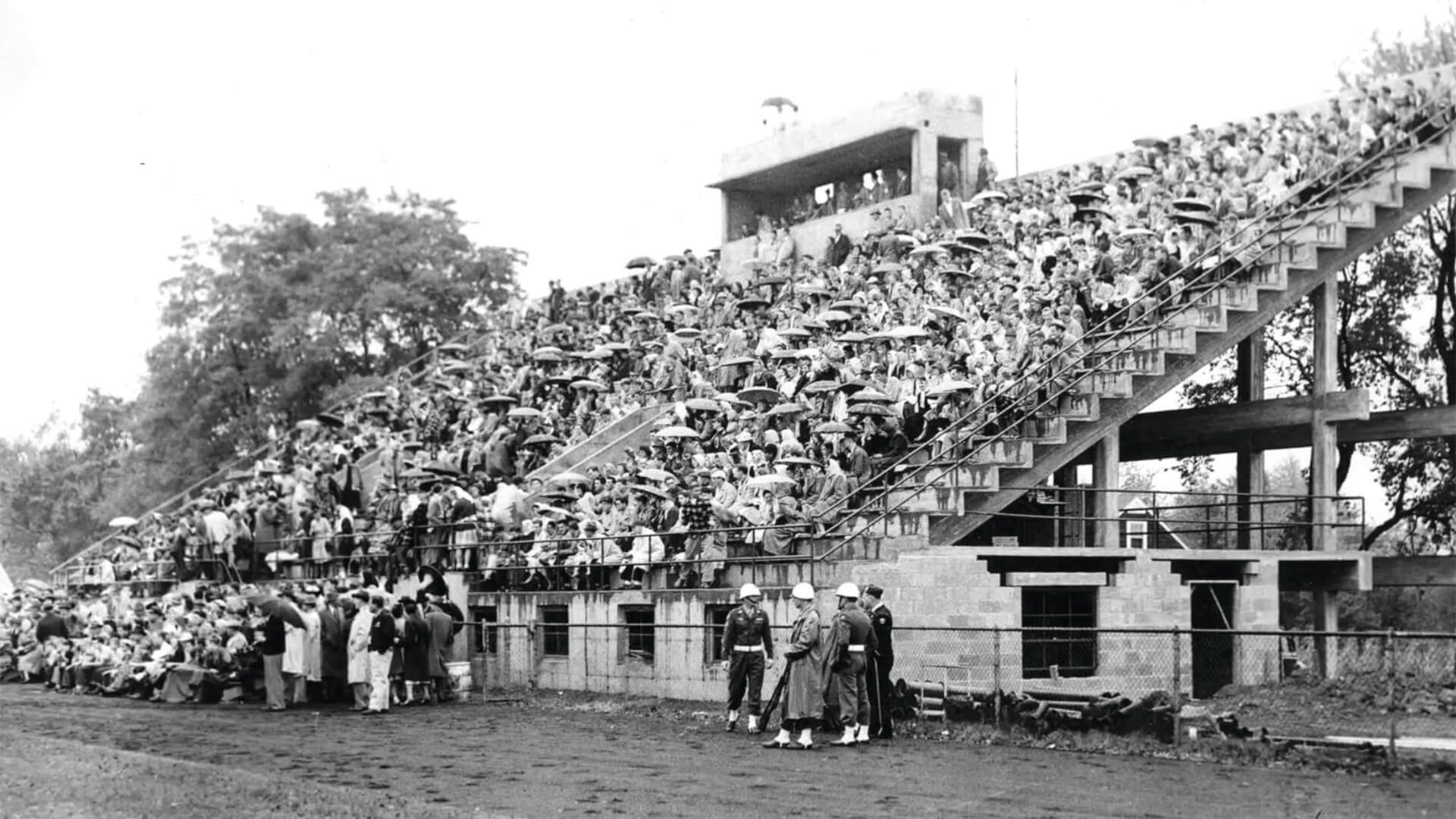
The Stadium, circa 1940
OAC’S WINNIGEST COACH
Dick Reynolds ’65 became head men’s basketball coach in 1972, retiring in 2012 as the winningest OAC basketball coach with 653 wins.
In March 2002, he led the Cardinals to their first NCAA Division III National Championship. His teams previously reached the Final Four in 1981 and 1991.
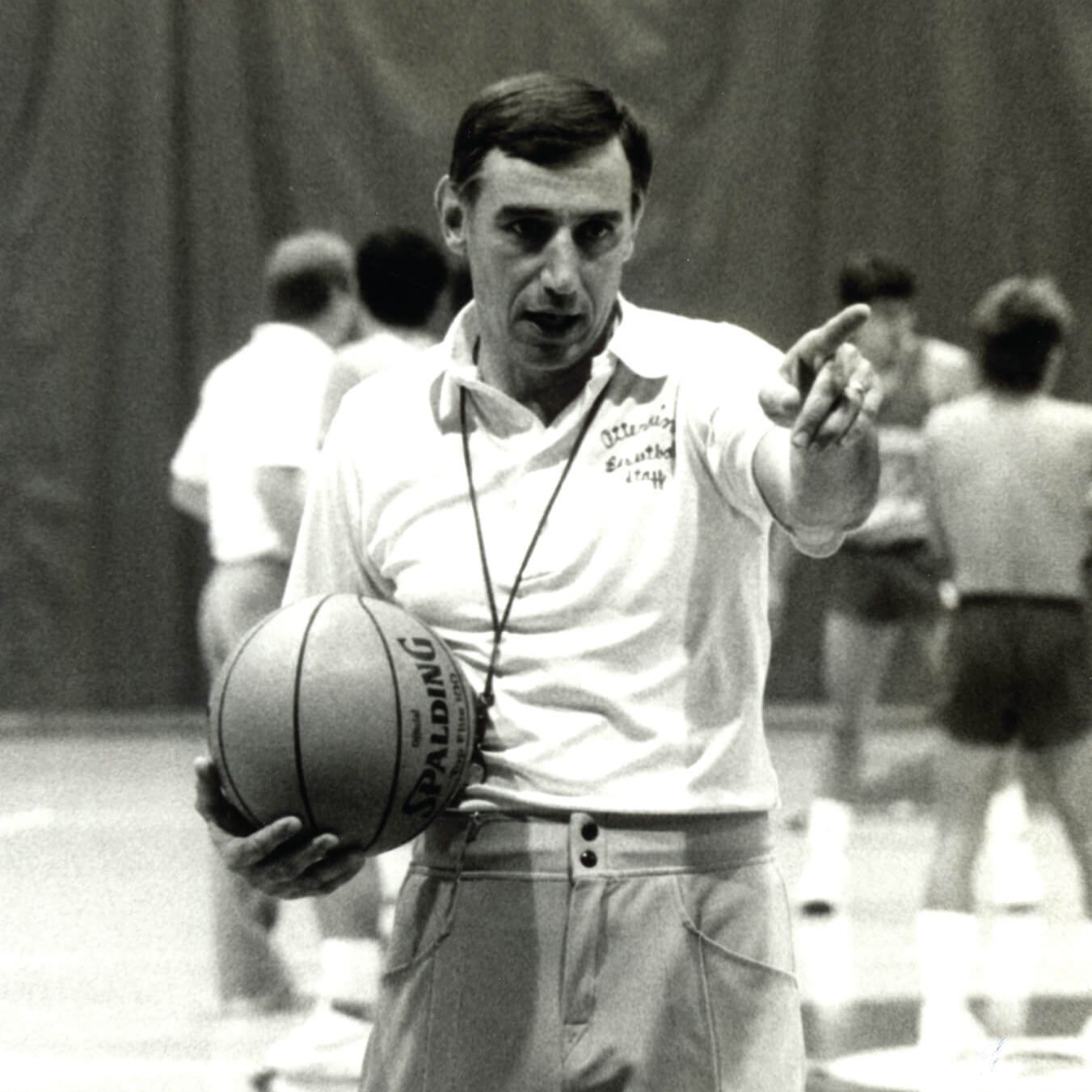
Dick Reynolds ’65
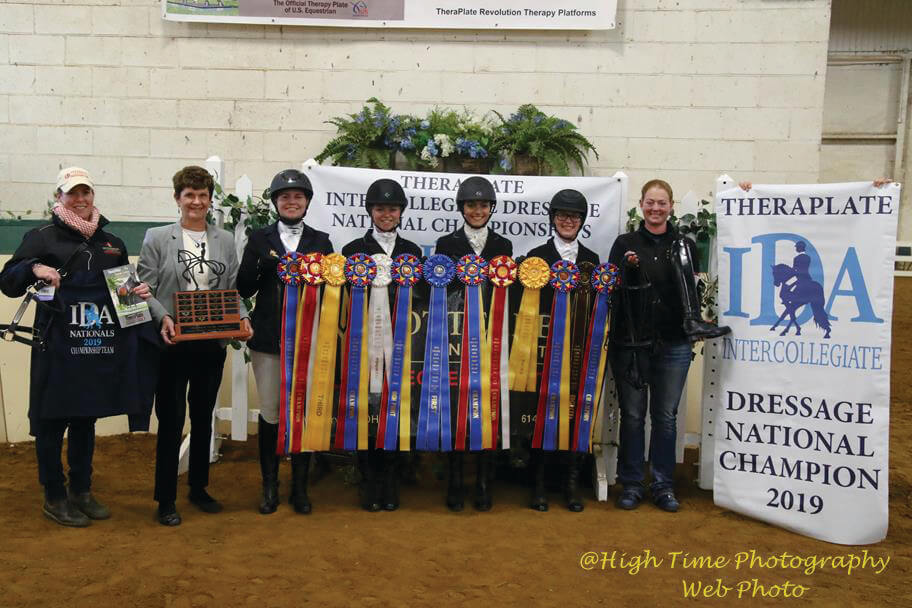
EQUESTRIAN TEAM
Seventy-five students, representing nearly every academic department, compete nationally with Otterbein’s equestrian team in threee discipilines: Hunt Seat, Dressage, and Eventing. Otterbein’s team was the 2019 Intercollegiate Dressage National (IDA) Champion team (no competitions in 2020 and 2021) and has many nationally ranked riders.
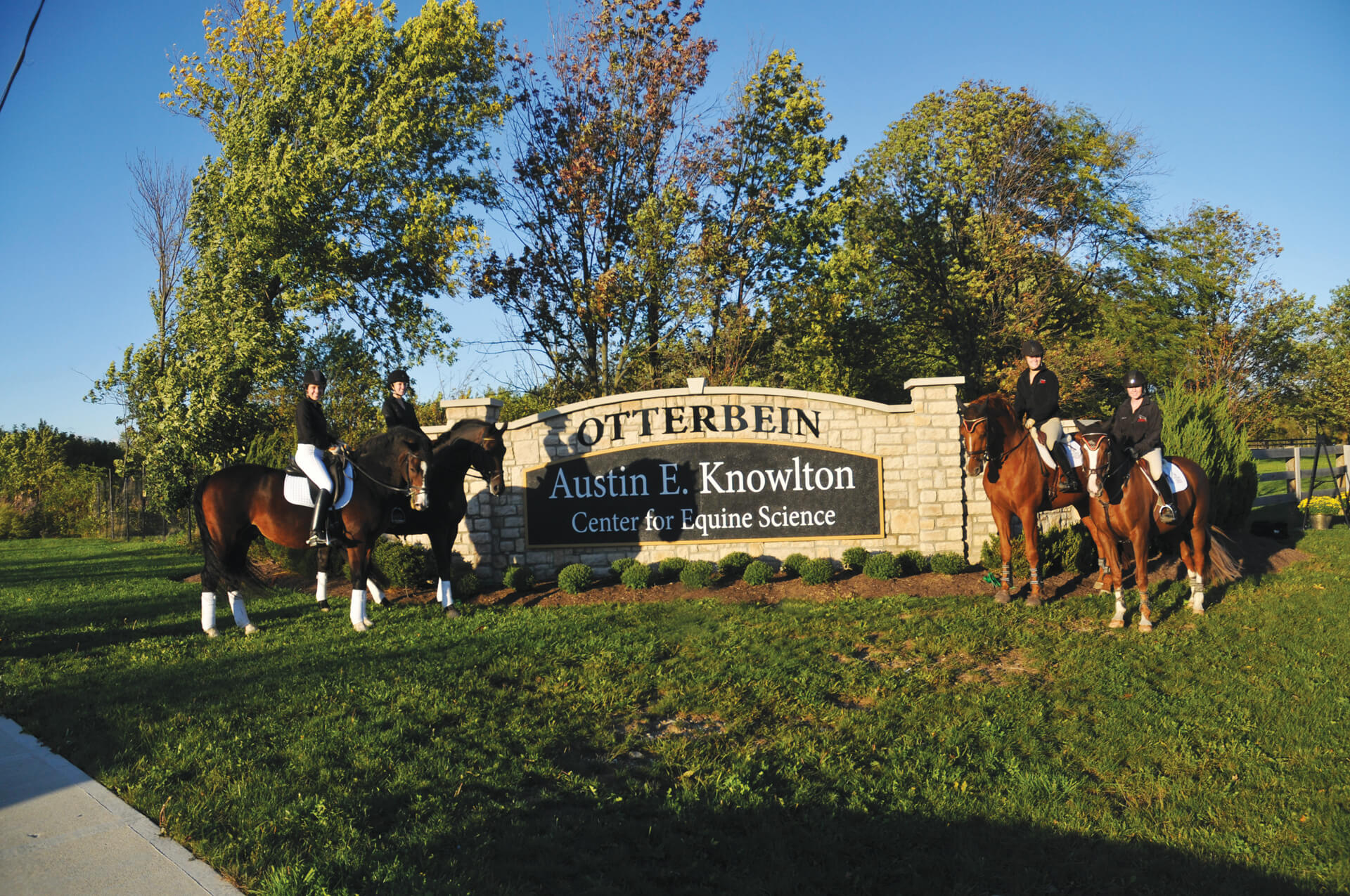
ACADEMIC TRADITIONS
WE ARE a smarter way to learn
Otterbein University was founded with a single course of study for all students, which was then broken into the Men’s Course (Classical or Scientific) and the Ladies’ Course (a modified version of the Scientific Course). Otterbein offered graduate courses starting in 1883, and the first doctorate degrees were awarded in 1889. By 1895, the doctorate program was discontinued; master’s degrees continued to be offered until 1912. Today, there are over 70 undergraduate majors and eight graduate degree programs.
“It’s fascinating to reflect on Otterbein then, as a student trustee in the late 1970s, and now, finishing my 12th and final year back on the Board of Trustees. Then, nursing was new, now we offer a nursing doctoral degree. Equine was in discussion, engineering not even envisioned, and the only campus computer was in Towers Hall and ran on punch cards.”
EARLY COURSES OF STUDY
Otterbein University was founded with a single course of study for all students, which was then broken into the Men’s Course (Classical or Scientific) and the Ladies’ Course (a modified version of the Scientific Course). Otterbein offered graduate courses starting in 1883, and the first doctorate degrees were awarded in 1889. By 1895, the doctorate program was discontinued; master’s degrees continued to be offered until 1912. Today, there are over 70 undergraduate majors and eight graduate degree programs.
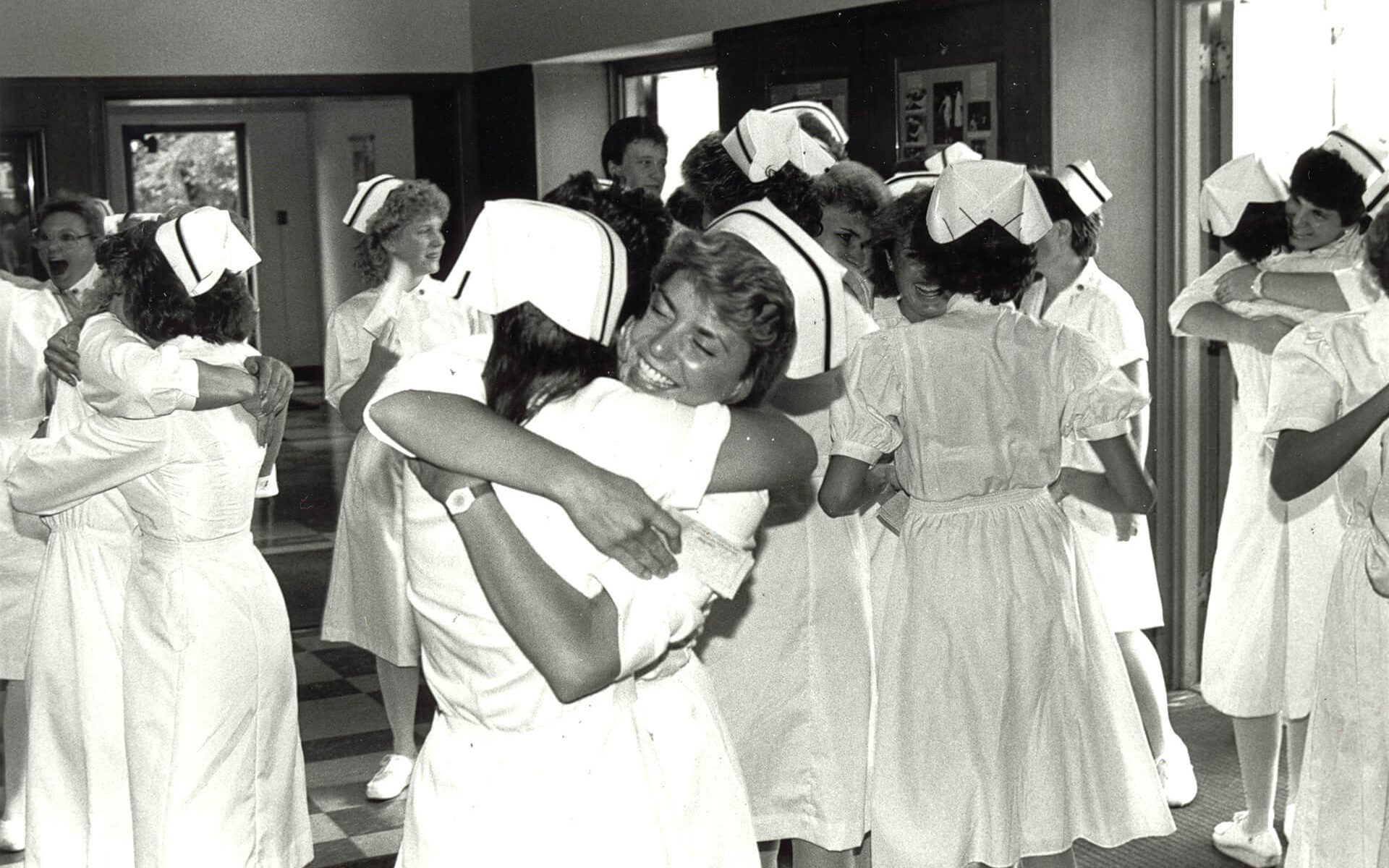
Nursing Graduates
THE ARTS GETS AN EARLY START
Rev. Lewis Davis brought the first piano to Westerville in 1852. Initially, students could take voice and piano lessons as an extracurricular activity and, in 1858, a choral society was formed. In 1873, music became part of the curriculum. Similarly, painting and drawing were offered as extracurricular activities starting in the 1850s but were integrated into the curriculum by the 1890s. In 1907, Otterbein staged its first theatre production, but it was not yet a program of study. Today, students can choose from majors in music, art, and theatre and display their talents in performances and exhibitions.
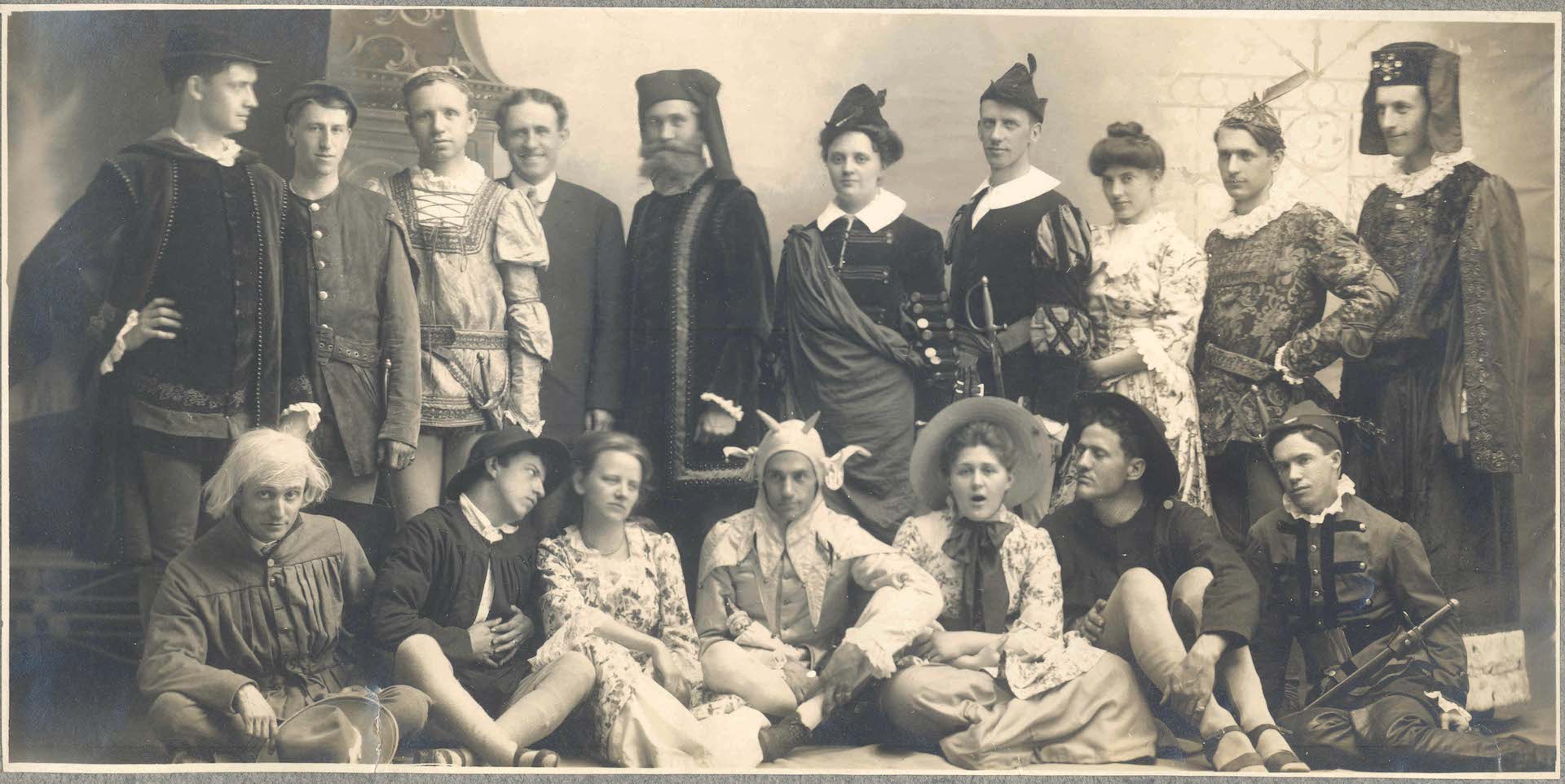
The Cast of “As You Like It” in 1907
INNOVATIVE TEACHING
Alzo Pierre and Lavelle Rosselot, a father-daughter professorial team, were pioneers of language learning. They established one of the first language listening labs in 1946 — later adding audio-visual components. The Rosselots produced conversational films with native French speakers during their travels to France. The rights to these films were purchased by Encyclopedia Britannica.
Now a keystone of an Otterbein education, Integrative Studies (IS) was innovative when it was established in 1969 as one of the first interdisciplinary, general education programs in the country. Originally called “Common Courses,” it was renamed and expanded in 1976. “I have taught dozens of IS sections, hundreds of IS students. In every class, I could see why Otterbein has made its exceptional commitment, of more than 50 years, to the general student: our liberal arts core provides the chance to study and write about the most significant ideas and experiences of human life. We take that with us for a lifetime,” said Professor Emerita Alison Prindle H’10.
In 1995, the Common Book program was established as a shared academic experience for all first-year students — one of the first such programs in the nation. A generous gift from alumna Mary B. Thomas ’28 provides each incoming student a copy of the selected book prior to their arrival and brings each book’s author to campus for a convocation. The program stimulates a year-long, interdisciplinary discussion exploring contemporary issues related to the book.
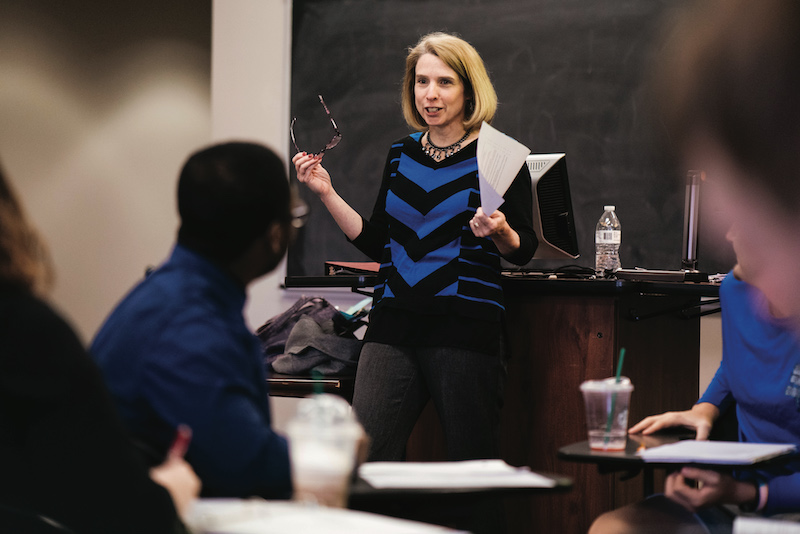
EXPERIENTIAL LEARNING
“The Otterbein community provides great opportunities outside of the traditional learning environment. Internships, research, volunteer opportunities, lab work, sports, and student organizations all provide great non-traditional learning opportunities and a foundation for involvement, service, and growth,” said Otterbein Trustee Chris Kaiser ’77. Experiential learning began at Otterbein in 1939 through a partnership with Westerville Public Schools to place education students in classrooms — long before student teaching became standard. The first Otterbein-sponsored study abroad trip was in 1962, when a group of French majors spent a year in France. Programs were soon established in other countries. Today, Otterbein students study abroad at locations in Africa, Asia, Europe, and the United Kingdom. Of her travel courses to Africa, Professor Emerita Glenna Jackson said, “Travel in African countries puts a face on what students learn about in the classroom. Suddenly, they can see, hear, smell, taste, and feel Africa — not just know about it as an object of interest.” Other immersive experiences find students involved in internships, research, leadership, and community engagement.
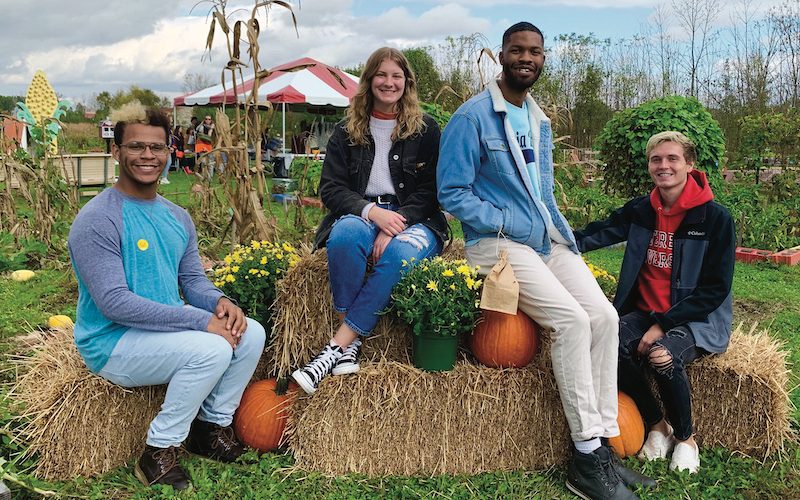
Otterbein Community Garden
“If we are to achieve cherished goals in every area — academic, co-curricular and administrative — we must continue to innovate.”
SERVICE LEARNING
While servant leadership has long been an Otterbein value, in the 1990s, volunteer service efforts transformed into an initiative to combine service and academics.
“Starting with the faith of a few professors who were willing to embrace service learning into their courses, the Otterbein curriculum currently has over 70 service-learning courses,” said Becky Fickel Smith ’81, executive director of alumni relations emerita. “Learning in the classroom and practicing in the community enhances both the teacher and learner.”
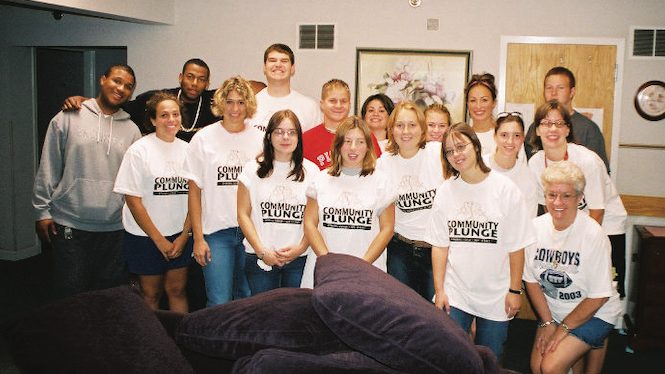
Community Plunge
GRADUATE DEGREES
Otterbein began offering graduate degrees to fill expanding needs for advanced professionals. The master of arts in education and the master of arts in teaching programs were established in the 1980s. The master of science in nursing was added in 1993. The master of business administration was added in 1997. Responding to a national initiative of the American Association of Colleges of Nursing, the Department of Nursing launched the University’s first doctorate degree since 1895. The first doctor of nursing practice class enrolled in March 2011.
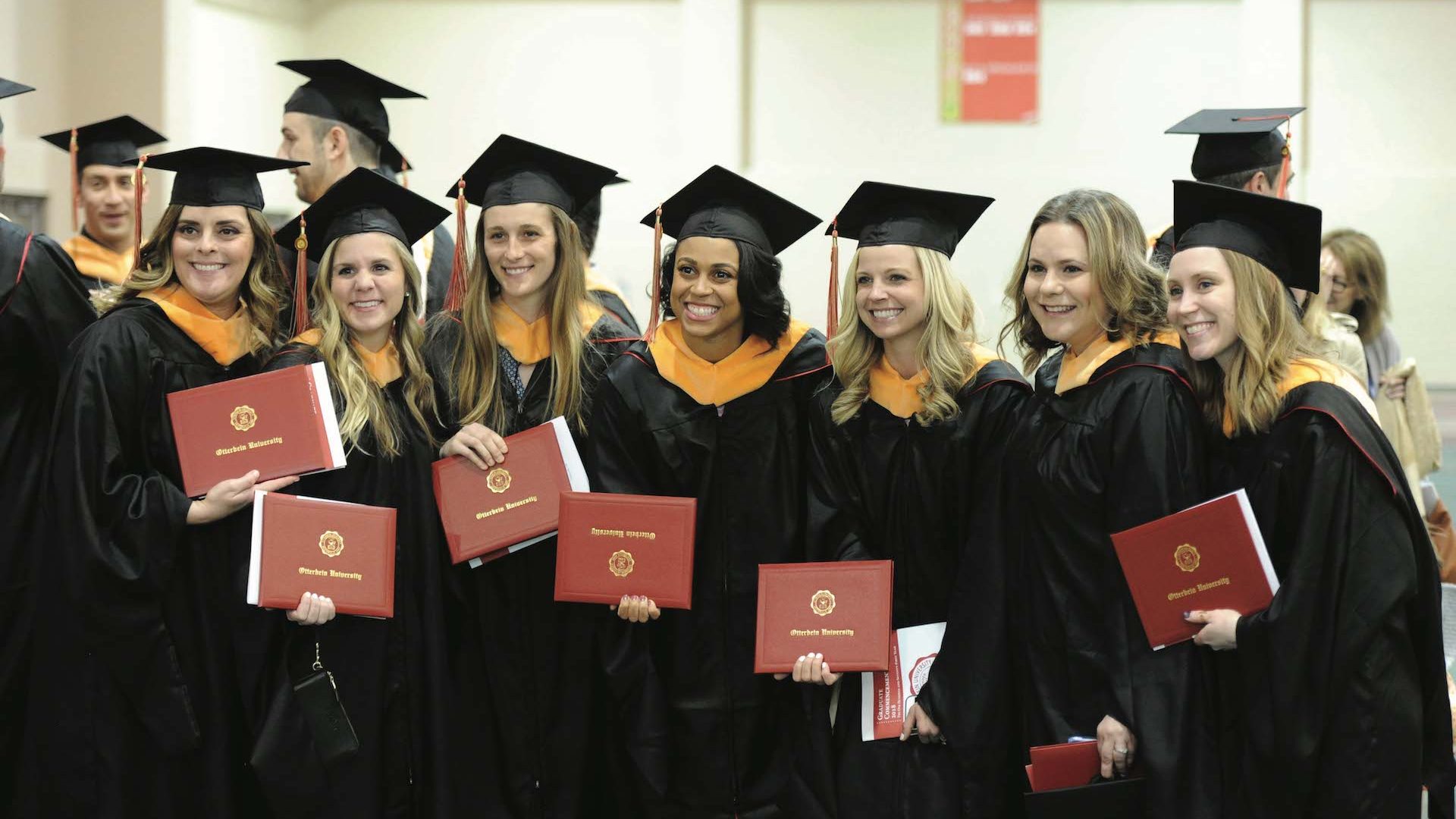
Graduate Students at Commencement
PARTNERSHIPS
Partnerships have been key to some Otterbein programs. In the 1970s, the University partnered with Grant Hospital in Columbus to offer associate degrees and registered nurse (RN) certification. Other programs grew from this partnership, including the bachelor of science in nursing major in 1979 and nurse anesthesia program in 2010. More recently, Otterbein’s zoo and conservation science program was made possible by partnerships with the Ohio Wildlife Center and Columbus Zoo and Aquarium. In 2016, The Point at Otterbein brought together partners from the government and business sectors to create new experiential learning opportunities for students and establish the Department of Engineering, addressing central Ohio employment needs.
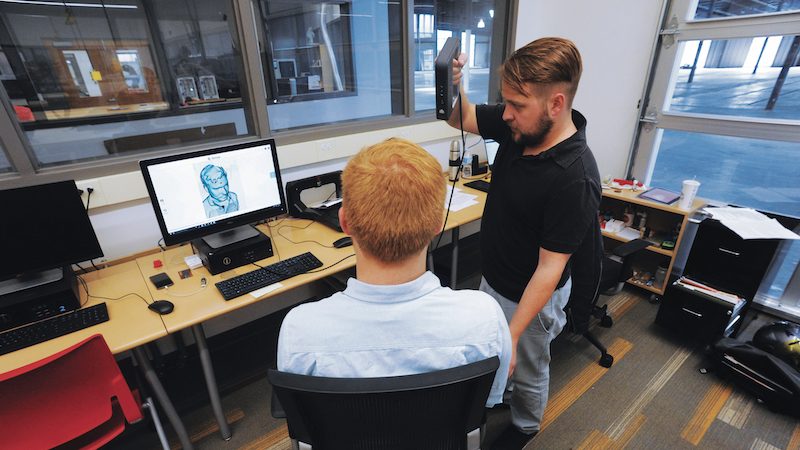
Engineering at The Point
LECTURE SERIES
Otterbein hosts several annual lectures, including the George W. and Mildred K. White Science Lecture Series, Graduate School Lecture Series, and the new Kathy A. Krendl Distinguished Lecture Series. This year marks the 20th anniversary of the Vernon L. Pack ’50 Distinguished Lecture and Scholar-in-Residence Series. Thanks to the generosity of Pack, each year a distinguished lecturer or scholar-in-residence visits campus to address important current issues that inspire the Otterbein community to reflect on ethical, spiritual, and social concerns. Speaker expertise has varied greatly, including the likes of Native American activist and environmentalist Winona LaDuke; cognitive psychologist Dr. Steven Pinker; and Pulitzer Prize- winning historian Doris Kearns Goodwin.
LEARNING IN THE CLASSROOM AND PRACTICING IN THE COMMUNITY ENHANCES BOTH THE TEACHER AND LEARNER.
96%
Class of 2020 employed or in graduate school within six months of graduation
96%
First-time pass rate of Otterbein graduates taking the National Council of State Boards of Nursing Licensing Exam
#12
Overall, America’s Best Colleges 2022, Midwest Regional Universities*
#18
Best Undergraduate Teaching, America’s Best Colleges 2022, Midwest Regional Universities*
#23
Best Value School, America’s Best Colleges 2022, Midwest Regional Universities*
*U.S. News & World Report
175 YEARS OF GENEROSITY
How Philanthropy Has Shaped Otterbein
The story of philanthropy at Otterbein is the story of its people: their generosity, their investment of time and commitment, and their selfless philanthropic support. These gifts have enabled the University and its students, faculty, staff, and alumni, to persist and thrive over the last 175 years.
One of the earliest records of philanthropic support that impacted Otterbein dates back to 1838, when Matthew and Peter Westervelt donated 27 acres to create the Blendon Young Men’s Seminary. By 1845, the vision for the school had stalled and the land and buildings were sold for $1,300 to three trustees from the United Brethren Church. In April 1847, Otterbein University was founded on the land.
From humble beginnings, Otterbein grew as supporters invested in the University. In 1854, as enrollment increased, Jacob Saum donated $1,600 to build a new residence hall, Saum Hall. Around the same time, Otterbein began construction of the “Main Building” to house a chapel, recitation and society rooms, and a small library — only for it to be destroyed by fire in 1870.
Supporters within the Otterbein and Westerville communities raised the money to replace it with an Administration Building (now known as Towers Hall), which was dedicated 150 years ago in 1872. In 1900, the shared history of Otterbein and Westerville almost ended when the Board of Trustees proposed moving the University to Dayton. Westerville citizens mobilized to raise $3,500 and lobbied for an additional $7,000 of support from the Columbus Board of Trade for improvements to Westerville’s infrastructure. This groundswell of support cemented town-gown relations.
Recognizing the impact of group philanthropy, theWesterville Otterbein Women’s Club was founded in 1921. Alumnae, former students, faculty, and faculty wives hosted teas and special programs to raise money and honor Otterbein women. The club opened its Thrift Shop 70 years ago in 1952 and donated proceeds back to the University. As of the club’s 100th anniversary, the group had donated more than $1 million.
For its Diamond Jubilee in 1922, Otterbein set out to build a $2 million endowment. To meet a $250,000 challenge grant from the Carnegie Foundation, Otterbein’s supporters rallied to raise $500,000. By 1929, the endowment had grown to $1,095,000.
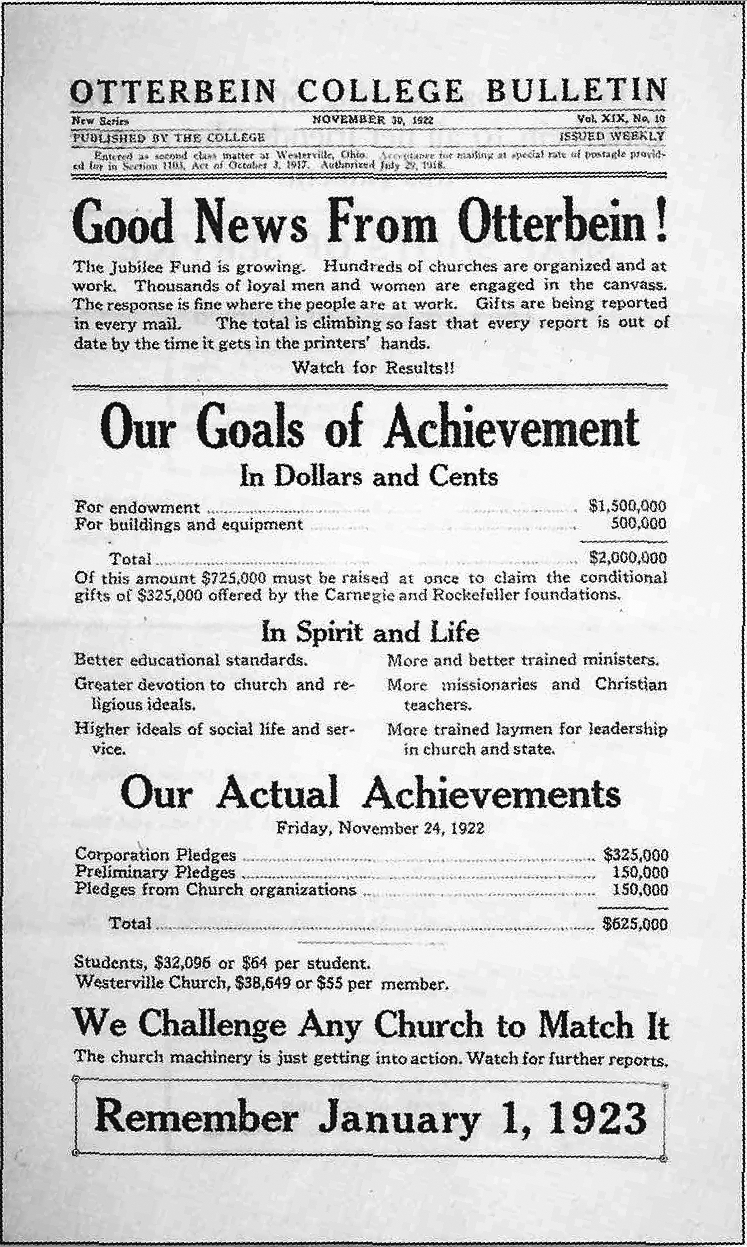
After World War II, another philanthropic group was formed by the returning veterans who enrolled at Otterbein. They raised money for the original Memorial Stadium and, in 1955, started the “O” Club. The club has donated more than $7 million to support Otterbein athletics, including building projects.
Major capital campaigns have combined large and small gifts from thousands of supporters to advance Otterbein. In the 1990s, the $30 million Campaign for Otterbein focused on renovating Towers Hall, increasing the endowment, and providing programmatic support. The campaign culminated with the 150th anniversary of Otterbein in 1997.
Most recently, the Where We STAND Matters campaign raised $52.7 million and created The Point, Otterbein’s state-of-the-art innovation center. More than 10,000 donors participated in the campaign, including 5,550 alumni. Over the years, many donors have embraced the call to help students by creating and supporting endowed scholarship funds and donating unrestricted gifts to the Otterbein Fund, which have been critical to Otterbein’s success.
The story of philanthropy at Otterbein would not be complete without mention of the largest individual gift, made by alumna Mary B. Thomas ’28. In 2001, the University received an unrestricted estate gift of $6.3 million from Thomas, a former trustee who previously endowed Otterbein’s Common Book program. The University now bestows its highest honor, the Mary B. Thomas ’28 Commitment to Otterbein Award, to recognize individuals and groups for transformational philanthropic support.
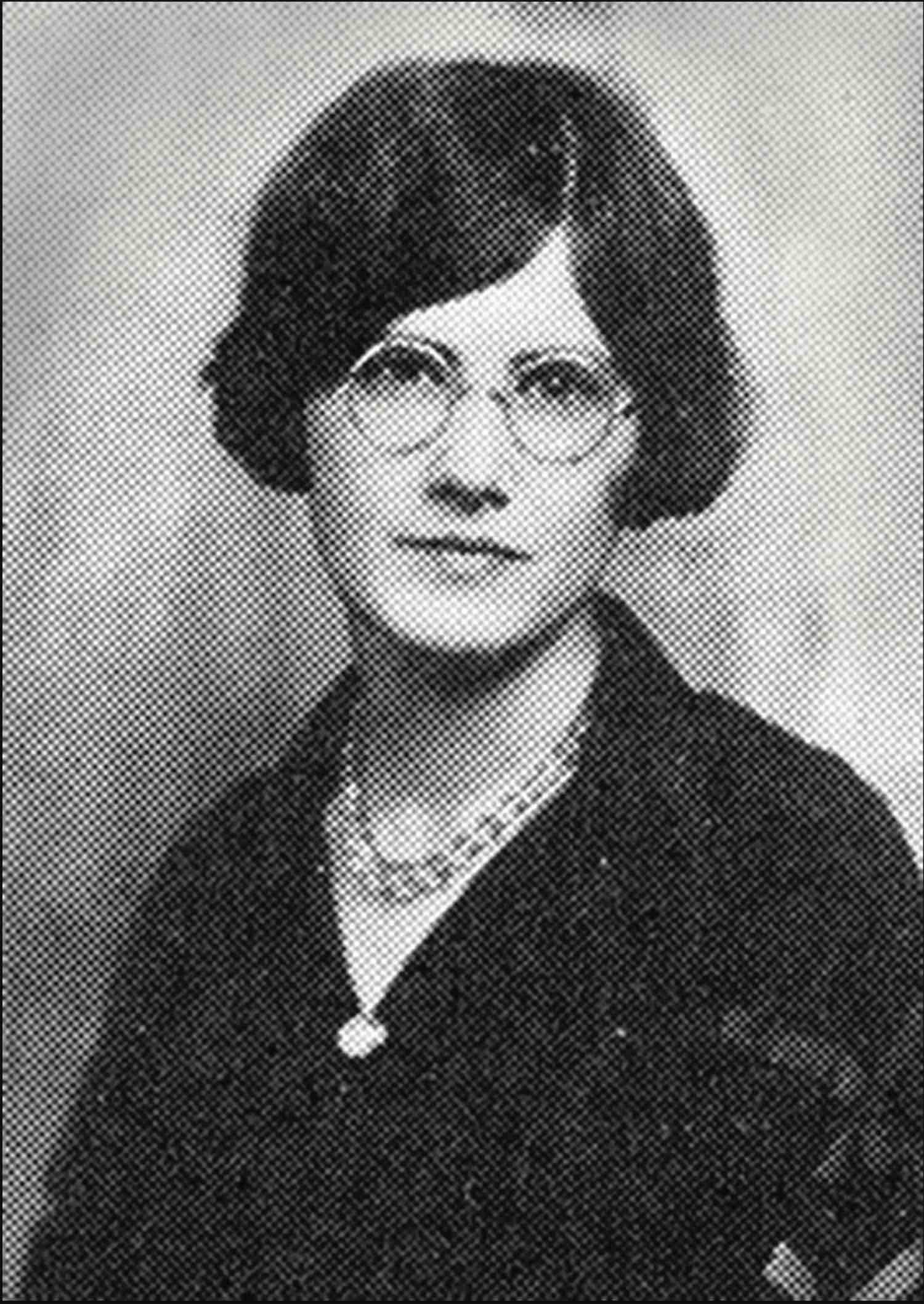
Mary B. Thomas
MORE NOTABLE PHILANTHROPIC GIFTS TO OTTERBEIN
In the 1890s, supporters including the Rike family of Dayton raised $15,000 to build the Association (“Sosh”) Building.
A Carnegie-endowed Library opened in 1908 and is now home to the Office of Admission.
Dr. Clyde E. Cowan donated $400,000 in 1948 to build Cowan Hall.
A new library was built on the site of Saum Hall in 1972. It was named Courtright Memorial Library in 1979 thanks to a generous donation by A. Monroe Courtright ’40 in memory of his parents, Robert and Ada Courtright.
The Rike Center was built in 1974 with a generous gift from the Rike family and support from the Kresge Foundation.
Built in 1928, the Alumni Gymnasium was transformed into the Battelle Fine Arts Center in 1979 with a gift from the Battelle Memorial Institute. Recently, the center received a facelift with support from Virginia Phillippi Longmire ’55, and new auditorium seating funded by Morton Achter H’00 and Barbara Chapman Achter.
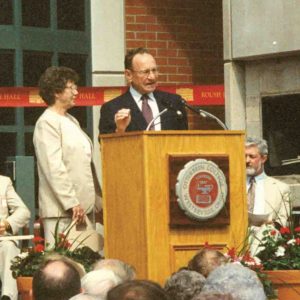 Roush Hall was dedicated in 1993, thanks to a gift of $2 million from Edwin “Dubbs” ’47
Roush Hall was dedicated in 1993, thanks to a gift of $2 million from Edwin “Dubbs” ’47
and Marilou Harold ’45 Roush as part of the $6.5 million Cornerstone for the Future Campaign.
The Clements Recreation Center was dedicated in 2002, supported by a $3.5 million donation from the Vida S. Clements Foundation and a gift of $500,000 from the Freeman family in memory of Harold ’23 and Ida Freeman and John ’50 and Margaret Eschbach ’50 Freeman.
The Shear-McFadden Science Center was renovated in 2009 with $3.7 million of philanthropic support.
Otterbein opened a new equine facility in 2009. In 2012, the Austin E. Knowlton Foundation donated $1.5 million to name it the Austin E. Knowlton Center for
Equine Science.
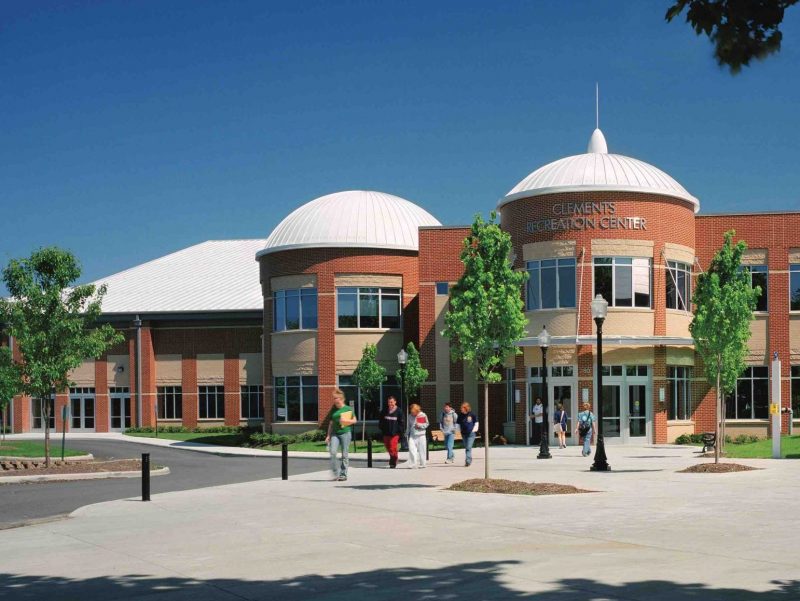
THE POWER OF AN OTTERBEIN DEGREE
The VOICES OF ALUMNI LEADERS AND SCHOLARS
Otterbein alumni say that what happened for them here — the mentoring, opportunities, and knowledge — continues to shape and guide their success as they advance their professions and the public good. Otterbein has a history of changing lives and launching great futures.
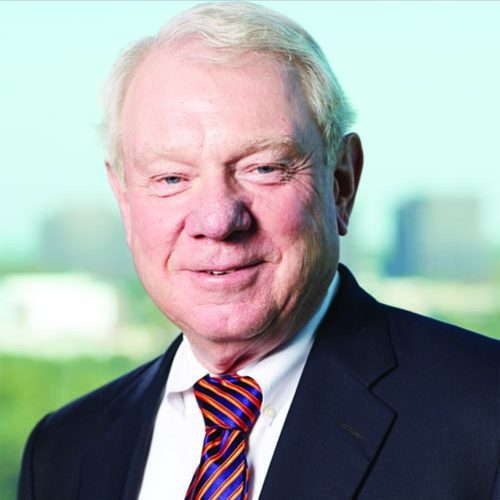
“The University gave me an opportunity to achieve a great education along with contributing to the moral compass that has helped guide me through life.”
MICHAEL DUCEY ’70
Independent Director at Apollo Global Management, Inc., Otterbein University Trustee Emeritus
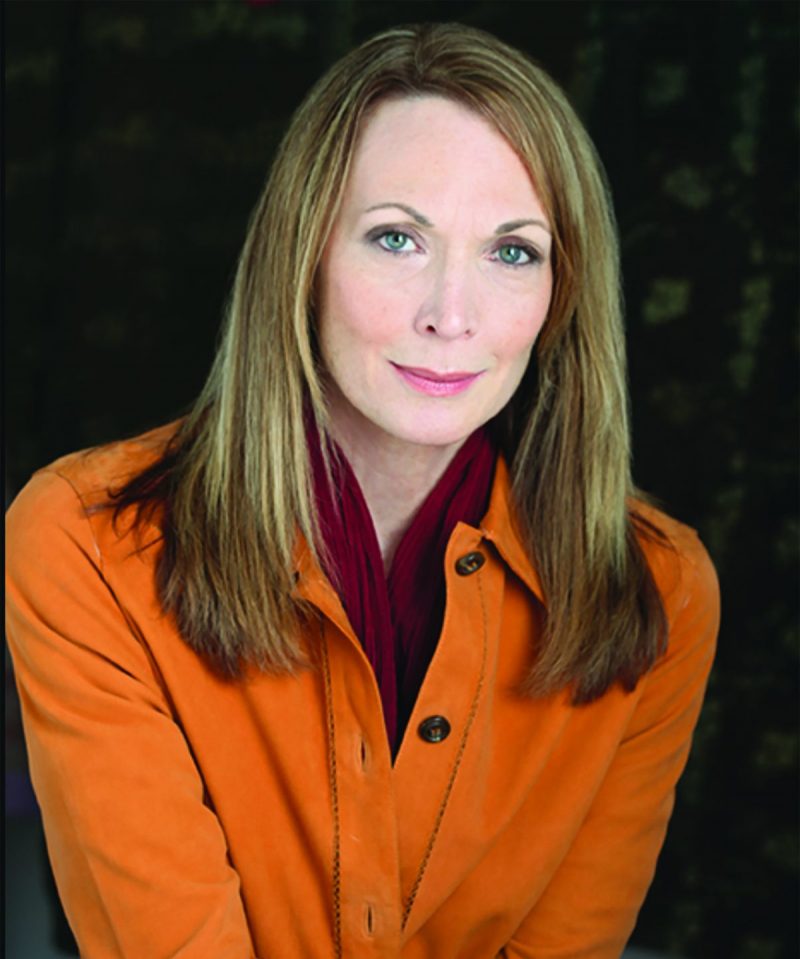
My Otterbein degree was an entry to the greater world and opportunities available around me. I will always be grateful for my Otterbein experience — it helped me become the person I am today.
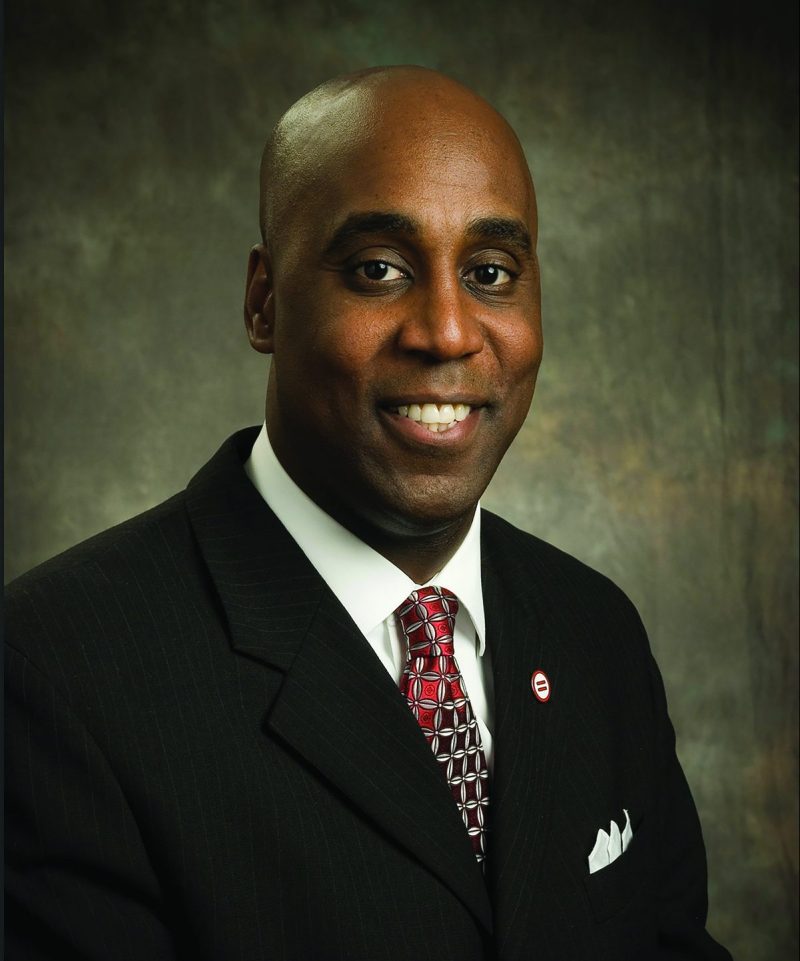
Otterbein turned out to be one of the best decisions I have ever made — from the outstanding faculty, to the lifelong relationships established with fellow students, the Otterbein experience made a lasting impression.
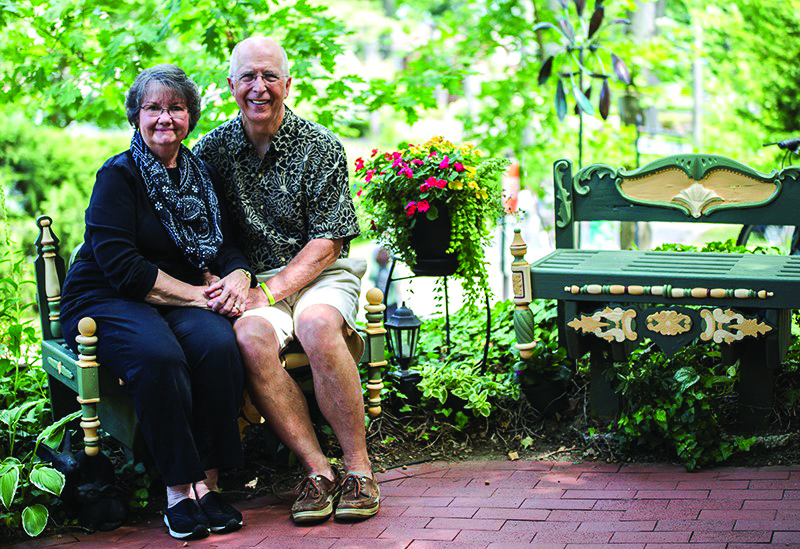
“We are all important, not one above the other, but we all stand on an equal playing field.”
DEBBIE EWELL CURRIN ’67
Folk Artist, Community Leader, and Otterbein University Trustee
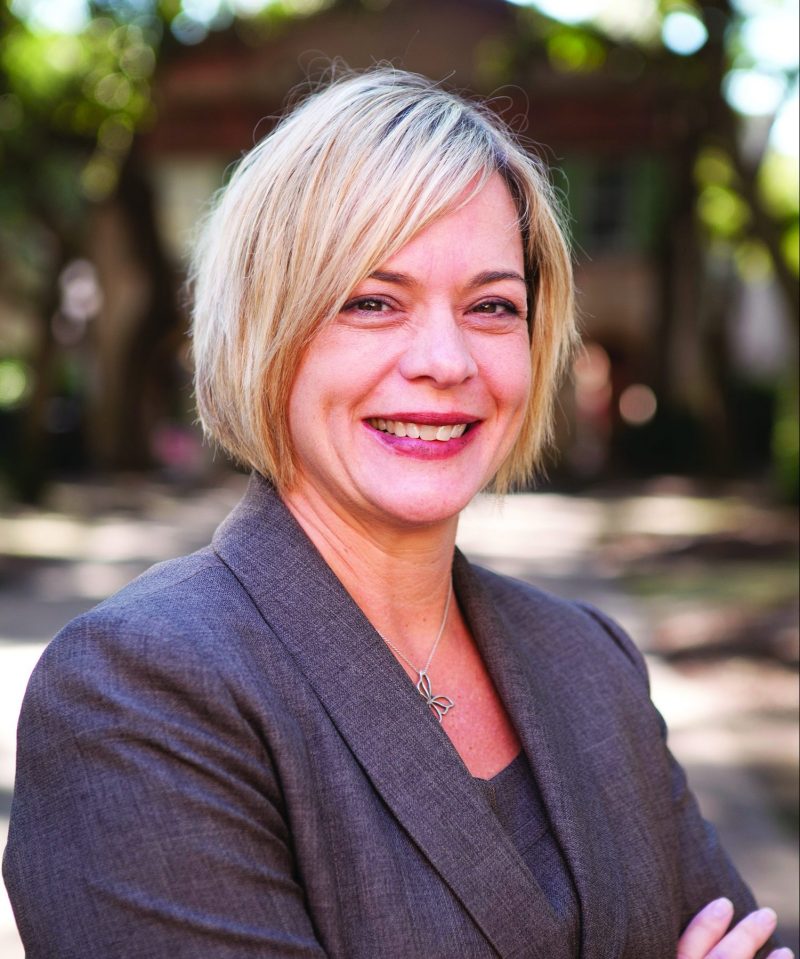
My Otterbein experience allowed me to find my professional calling and inspires in me the will to make my little corner of the world a better place.
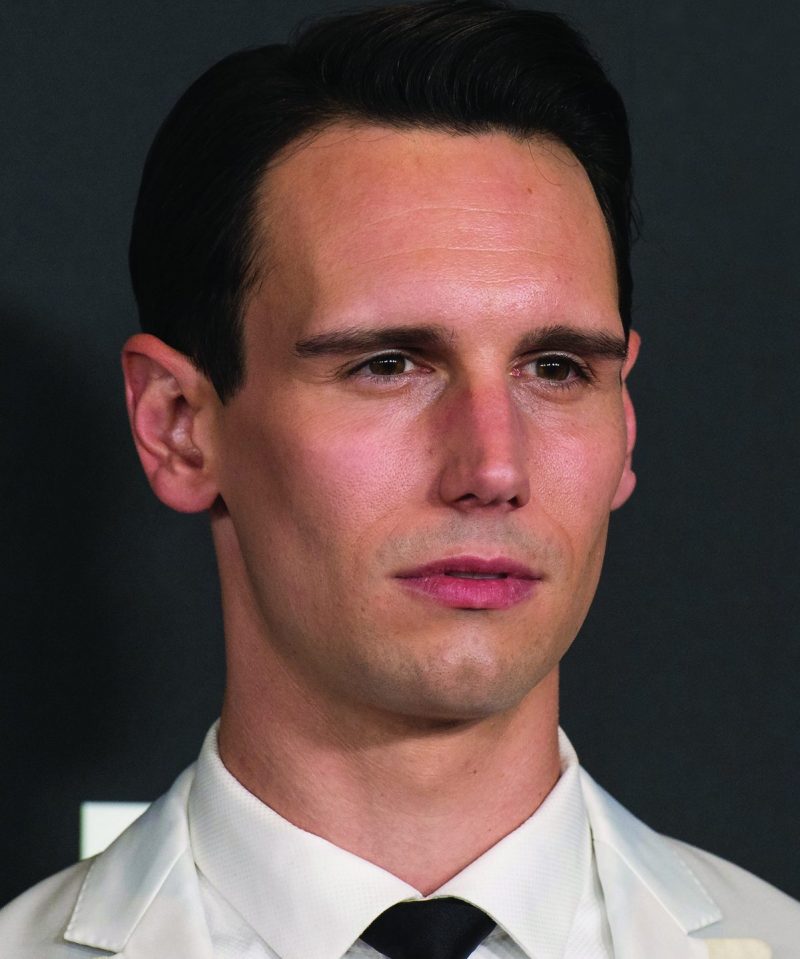
I felt that I became an actor at Otterbein and I undoubtedly became a more full and better person. This place is nourishing. It stands for kindness. It stands for inclusivity.
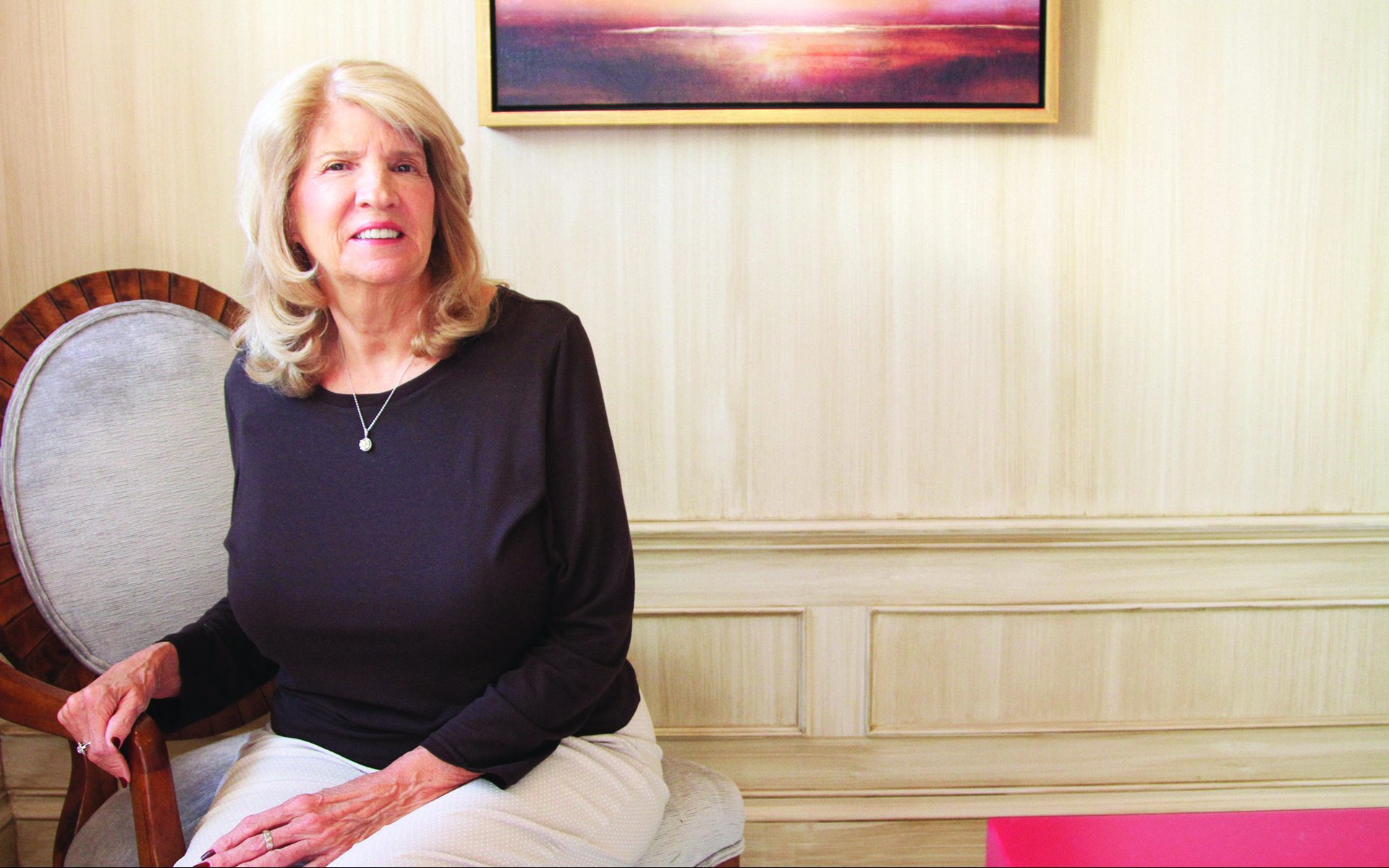
“Education is so important, and we must protect the places that do it well and take care of their students. That’s Otterbein.”
ANNIE AMES ’86
Retired Central Ohio Business Leader, Otterbein University Trustee Emerita, 2019 Mary B. Thomas ’28 Commitment to Otterbein Award Recipient
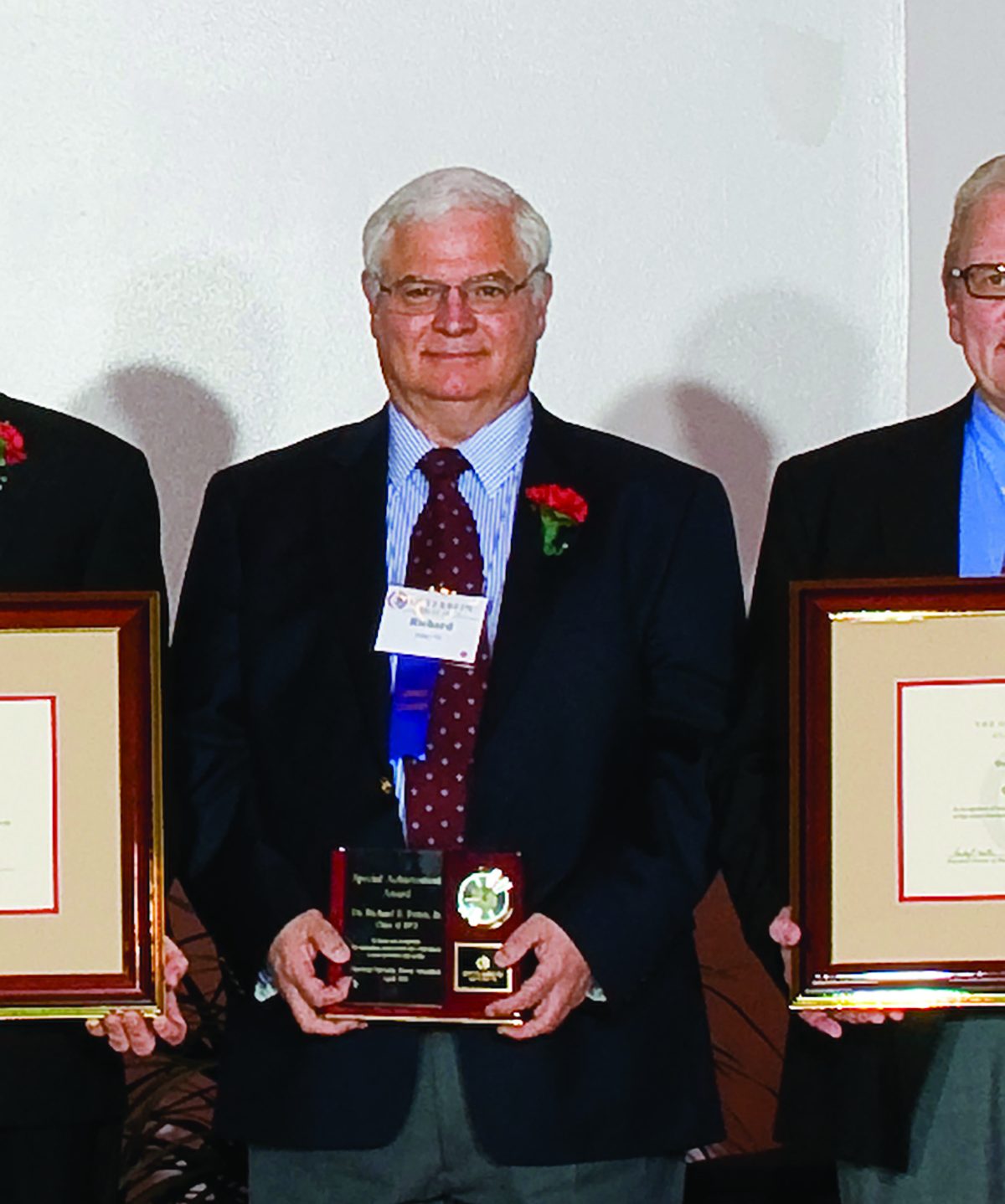
Otterbein helped me become comfortable with being uncomfortable. This allowed me to think of things I would have never thought of and to try things I would have never tried.
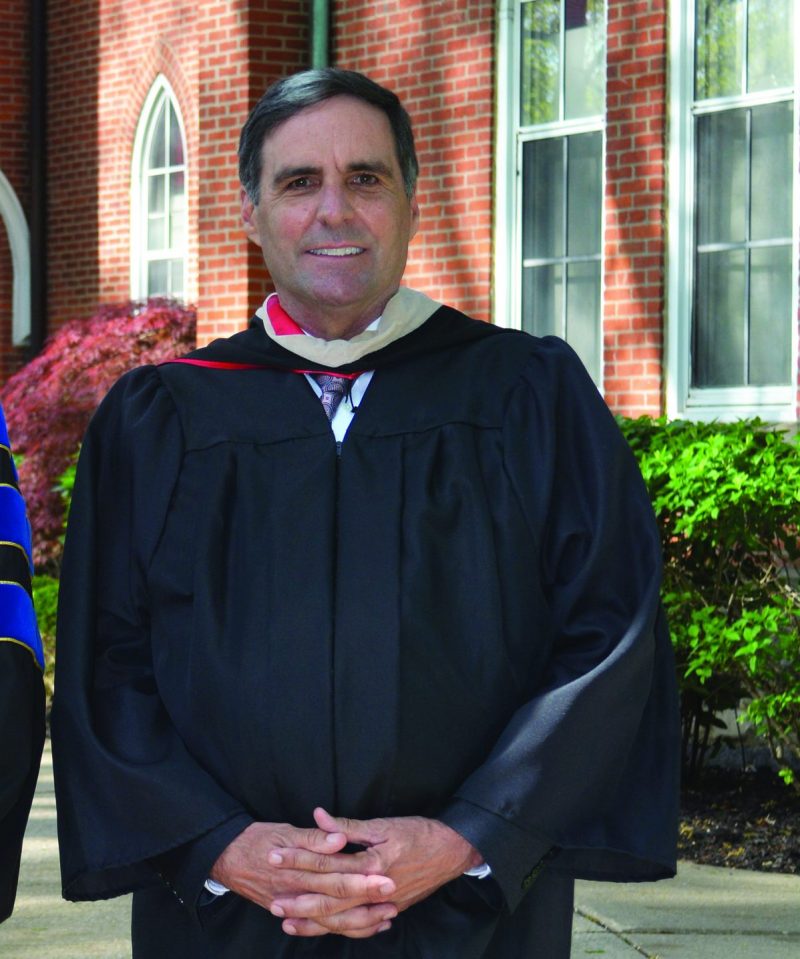
The power of an Otterbein degree didn’t teach me what I needed to learn, but courageously how to learn. With that knowledge, opportunities became limitless and my biography began to surpass my wildest dreams, all while remaining in humble and unconditional service to others.
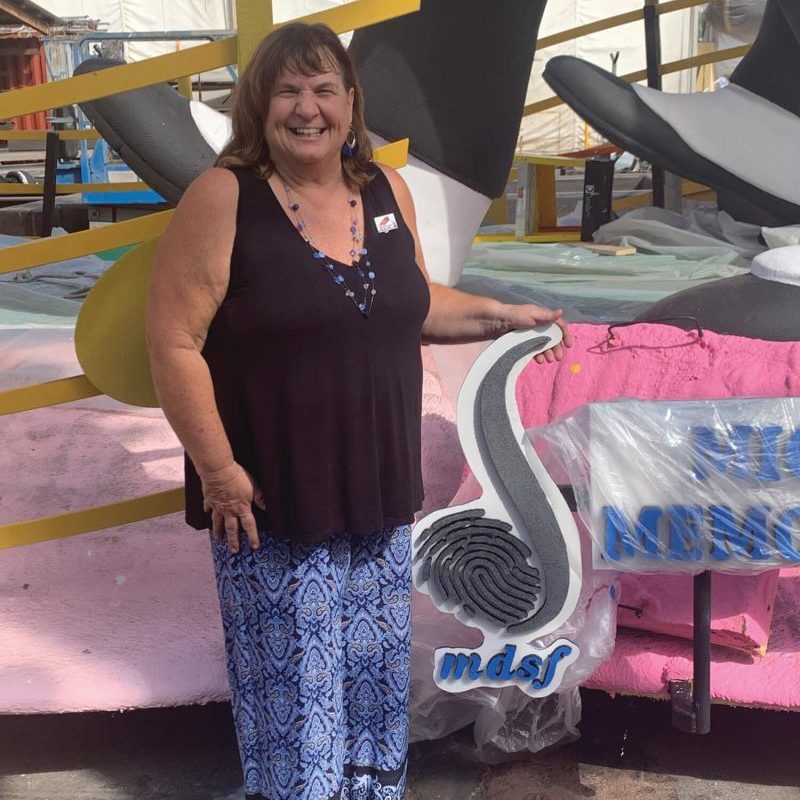
“For me, the power of an Otterbein Degree is generational connections-”
“I have Freeman, Eschbach, and Sewell Otterbein families from the 1900s to the present! Those connections have given me the power to promote Otterbein to the world.”
KAREN FREEMAN SEWELL ’79
Coordinated a national effort for recognition of America’s marching band directors in the 2022 Rose Bowl Parade to honor her late husband and Otterbein alumnus, Mike Sewell ’79.
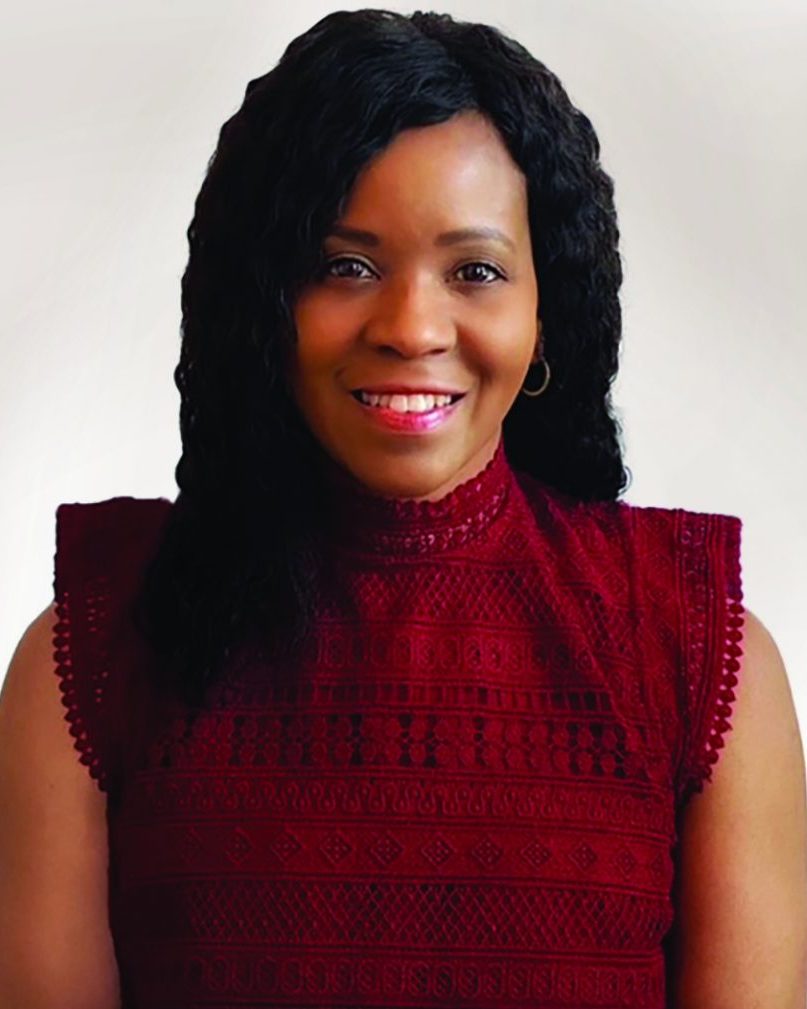
I attained enhanced critical thinking, emotional intelligence, increased financial stability, and career advancement as a respected leader in my field. My Otterbein degree prepared me for a world where understanding how to apply a multidisciplinary perspective is a valued asset.
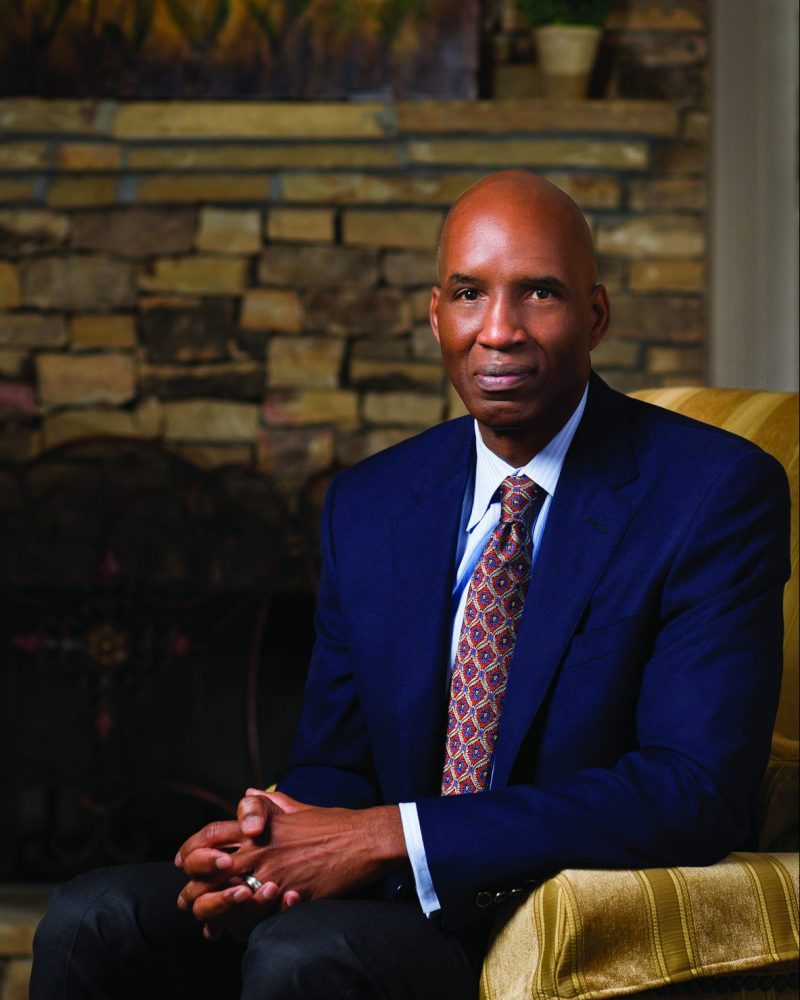
Otterbein gave me the ability to communicate, think critically, and to relate to people in all walks of life.
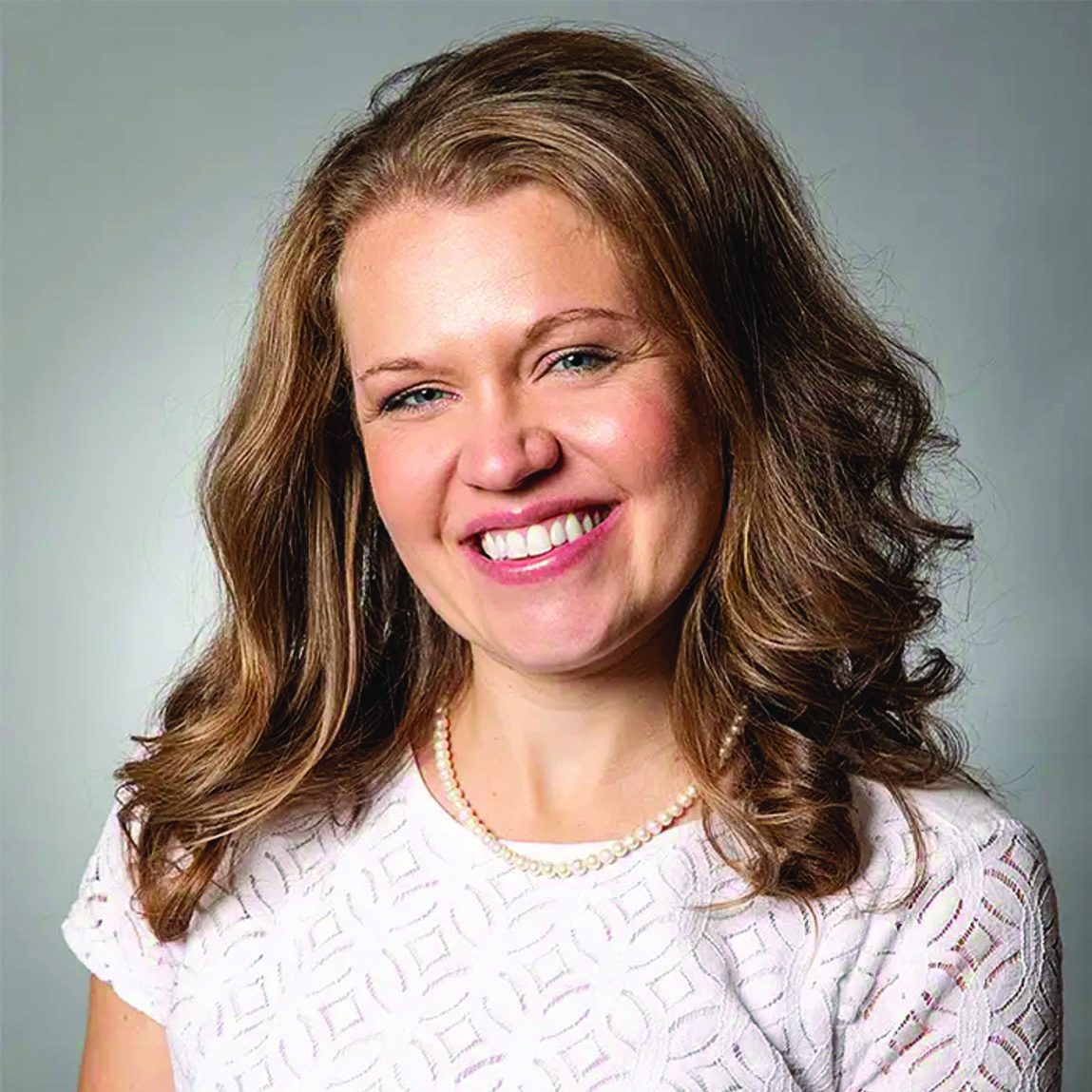
“A degree from Otterbein means standing up. It means standing for, standing in, standing on, and standing out. Otterbein educates the whole person and its students make the world a brighter place.”
MAGGIE ELLISON ’10, MBA ‘19
Vice President at Event Marketing Strategies, Otterbein Alumni Council Chair Elect
